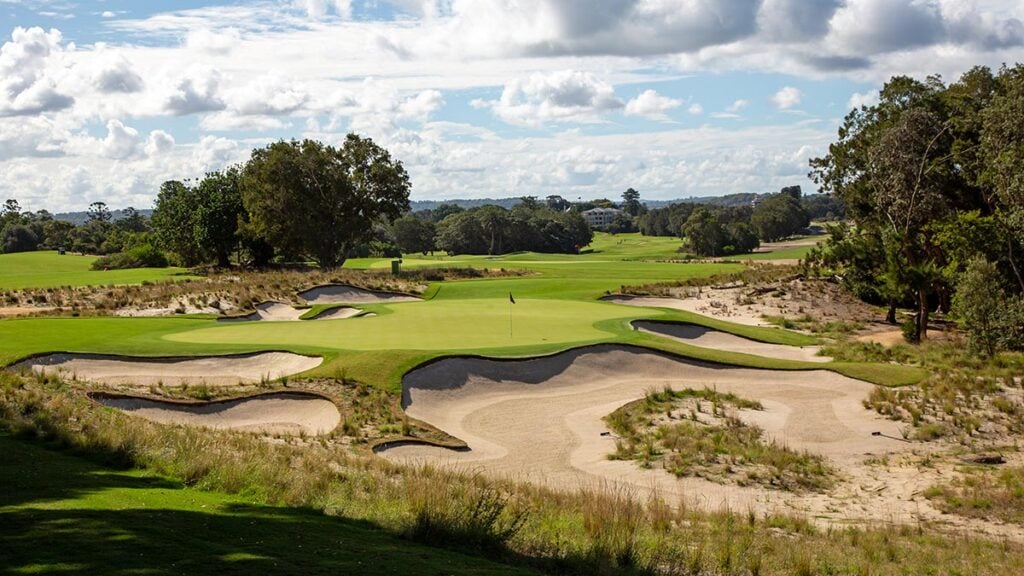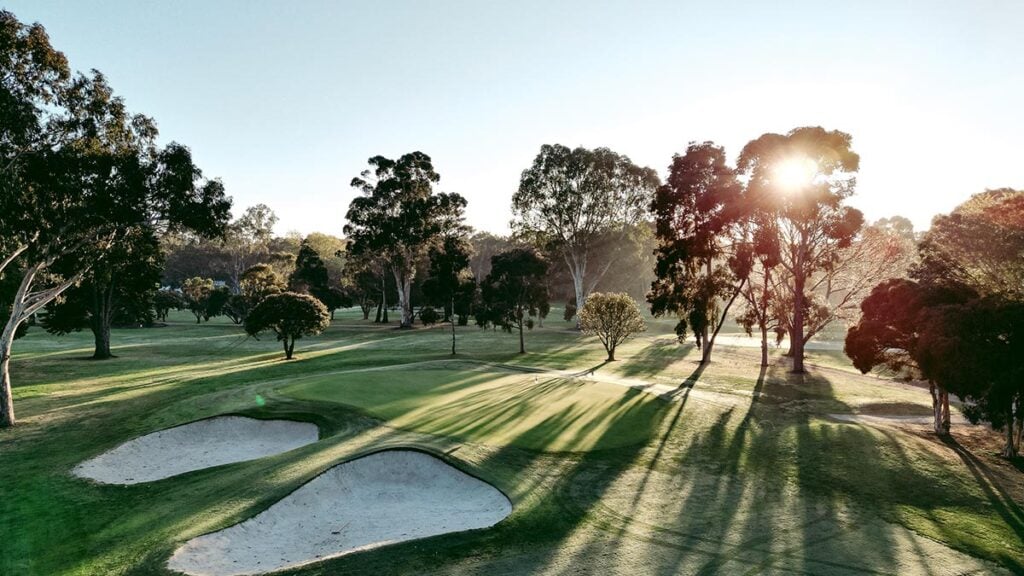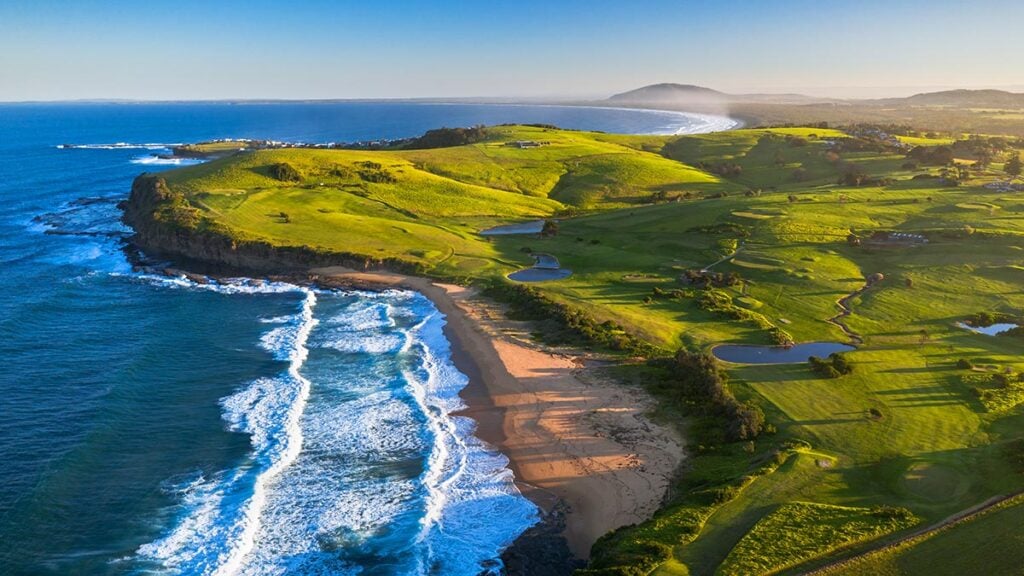The most important development in golf-course architecture during the past 20 years is the elevation of sand-based sites. Encouraged by the success of destinations like Bandon Dunes, developers have spent this time scouring the globe for sandy, dunes-like properties on which to construct new courses and lure golfers, several of which make their debut on the Golf Digest 2024-2025 World’s 100 Greatest Courses, our ranking of courses outside the United States.
This is nothing new. The first golf courses—the links of Scotland, England, Ireland and Wales—were born from sand. Early golfers forged their way through the gorsed and grassy landscapes of dunes, kettles, eskers and seaside plains, chasing their balls while developing holes, which over time became fully realized courses. Advancements in construction methods throughout the 20th century enabled courses to be built anywhere on any type of land, negating the need for pure natural movements, but sand—near a coast or not—remains the medium that produces golf that most resembles the game as it was conceived.
This year’s ranking reflects a reappraisal of the virtues of sand and, more specifically, links golf. In the 2022-2023 World’s 100 Greatest Courses ranking, 40 courses that could be classified as links were represented (defined here as coastal courses built on mostly sandy linksland). This year that number is 54. This does not count the numerous inland courses built on sand, including those in the Melbourne Sand Belt region, highlighted by Royal Melbourne’s West Course, ranked fifth, or the heathland courses southwest of London, topped by Sunningdale’s Old Course at No. 12.
Just as important as quantity in demonstrating the appreciation for sand is the upward movement of links courses in the rankings. Nine of the top 10 courses are links, up from six in 2022-2023. Links courses, in fact, jumped a collective 351 places in the poll, marked most notably by Trump International surging 33 places, followed by Cruden Bay (30 places), Prestwick (28), Portmarnock (Championship) and Royal Troon (25 each) and Kingsbarns (24). Links stalwarts like Royal Hague (No. 48), designed in 1939 by Charles Alison, Royal St. David’s in Wales (No. 76), Enniscrone in Ireland (No. 87) and Paraparaumu Beach in New Zealand (No. 96) enter or reenter the ranking. “Secondary” courses at established clubs also get love, with Turnberry, Portrush, St. Andrews and several others placing two courses on the list for the first time.
We urge you to click through to each individual course page for bonus photography, drone footage and expanded reviews. Plus, you can now leave your own ratings on the courses you’ve played … to make your case why your favorite should be ranked higher.
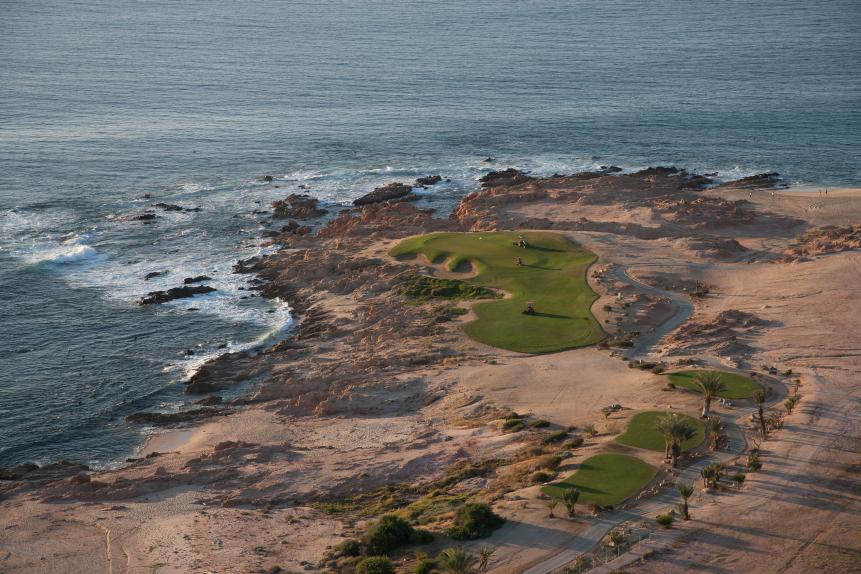 Stephen Szurlej 100. (NR) Cabo del Sol (Cove Club, formerly Ocean Course) Cabo San Lucas, Baja Sur, Mexico
Stephen Szurlej 100. (NR) Cabo del Sol (Cove Club, formerly Ocean Course) Cabo San Lucas, Baja Sur, Mexico
- World’s 100 Greatest
When Jack Nicklaus first saw this Baja Peninsula site, what can best be described as Scottsdale-meets-the-Sea of Cortez, he told reporters, “This is my chance to design a Pebble Beach.” He took advantage of that chance, routing an exciting 18 that plays from highlands of desert cacti over dry washes and down to the sea on both nines. When the layout opened in 1994, Nicklaus said it had the three finest finishing holes in golf, running along rocks above the crashing surf of Whale Bay. That’s not true anymore. In 2020 the 17th and 18th holes were demolished and replaced by two inland holes to make oceanfront space for expanded resort development. Still, panelists find the remainder of the design is compelling enough to merit reentry into the final spot in the World 100 ranking. View Course 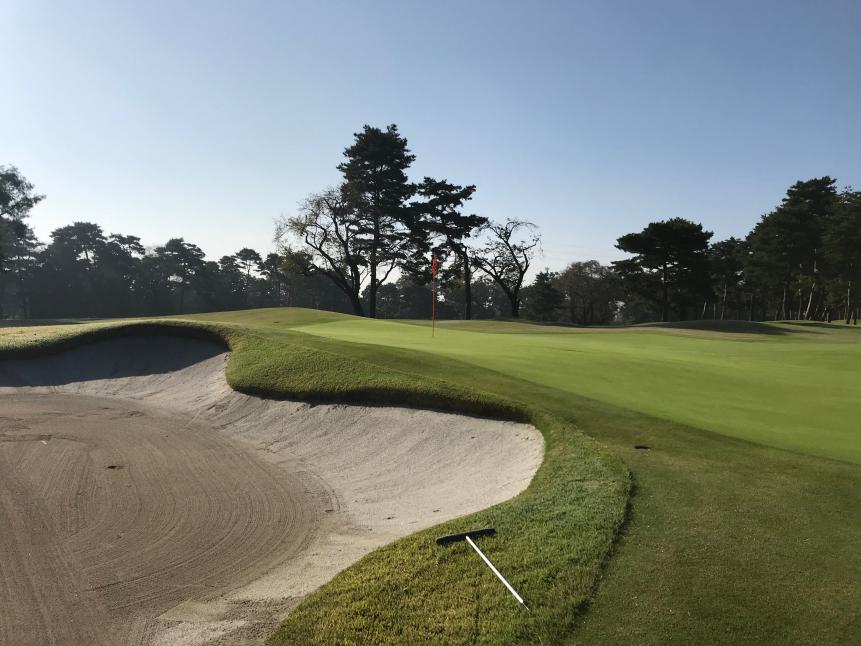 Michael Wolf/@BamaBearcat Private 99. (61) Tokyo Golf Club Saiyama, Saitama, Japan
Michael Wolf/@BamaBearcat Private 99. (61) Tokyo Golf Club Saiyama, Saitama, Japan
- World’s 100 Greatest
It is a common misbelief that Toyko Golf Club was designed by C.H. Alison, the talented Englishman who visited Japan in the early 1930s and transformed the country’s golf architecture with such courses as Hirono and Kawana Hotel. Alison did design a course for Tokyo in 1932, but its land was requisitioned by the Imperial Army in the lead-up to WWII. The club moved to a new layout designed by Japanese architect Komei Ohtani in 1939, while Alison’s course became potato fields. That didn’t keep golf architect Gil Hanse, who has done extensive remodeling of Tokyo G.C. over the past 15 years, to fashion features that reflect Alison’s, not Ohtani’s, philosophy of design. View Course  Graham Uden Private 98. (NR) Amata Spring Country Club Chonburi, Chonburi, Thailand
Graham Uden Private 98. (NR) Amata Spring Country Club Chonburi, Chonburi, Thailand
- World’s 100 Greatest
Amata Spring can be considered the Shadow Creek or Wynn Golf Club of Thailand, though instead of manufacturing valleys, creeks and foothills out of a flat desert floor the base material here was a scant circle of land surrounding a large industrial lake. The reservoir level was drained 10 meters to give the architects room to work, and fill was used to build up enough land to support holes strung around the centralized water that comes into play on eight holes. The course is a garden enclave in the middle of a densely populated city 35 miles southeast of Bangkok, completely inoculated from the surrounding urbanization, and features a floating island green (players are ferried to it in a boat) and an 18th hole that finishes next to a Wynn-like cascading waterfall. View Course 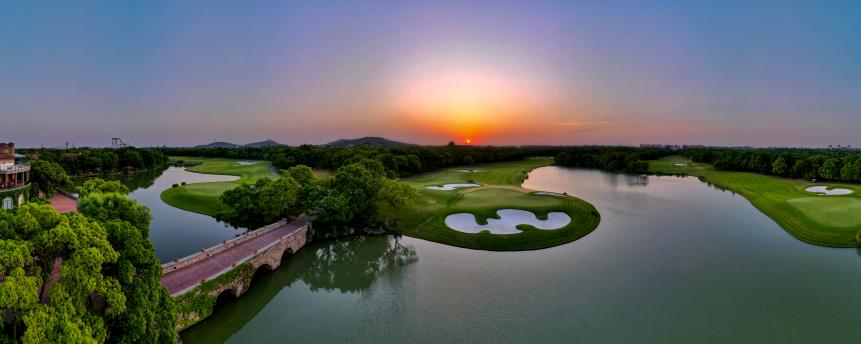 Courtesy of the club Private 97. (NR) Sheshan International Golf Club Songjiang, Shanghai, China
Courtesy of the club Private 97. (NR) Sheshan International Golf Club Songjiang, Shanghai, China
- World’s 100 Greatest
Sheshan International, at the base of Sheshan Mountain, is considered by some to be the Augusta National of China because of its opulent conditioning. The stylistic design, by Canadian Neil Haworth and his late partner Robin Nelson, incorporates a small forest, a canal, several manmade ponds and a small, deep stone quarry, over which both the drivable par-4 16th and long par-3 17th play. Sheshan hosted 14 of the 15 annual World Golf Championship’s HSBC Champions events between 2005 and 2019. View Course 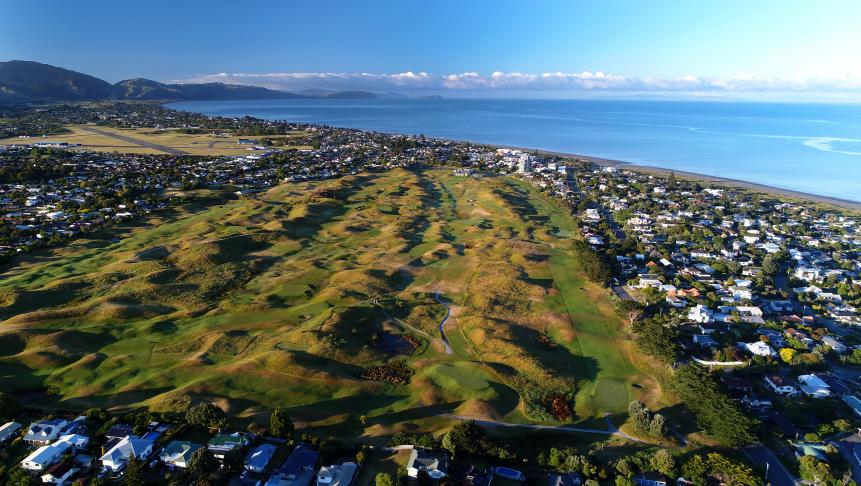 Gary Lisbon 96. (NR) Paraparaumu Beach Golf Club Paraparaumu Beach, Kapiti Coast, New Zealand
Gary Lisbon 96. (NR) Paraparaumu Beach Golf Club Paraparaumu Beach, Kapiti Coast, New Zealand
- World’s 100 Greatest
Few authentic sand-based links in New Zealand had an international following before the development of Tara Iti and the courses at Te Arai, with Paraparaumu Beach being the exception. James Watt built the course on the Kapiti Coast north of Wellington in two sections, one nine in 1930, the other in 1937. New owners took charge in 1949 and to remodel it they hired Alex Russell, the Australian champion golfer who turned to course design after working with Alister Mackenzie. Russell spent six weeks on the property, reshaping dunes and creating splashy bunkers. Two years later, he returned and altered bunker faces from sand to turf because heavy winds were constantly eroding the steep sand faces. The club has preserved a number of mature trees throughout the links to act as buffers against wind. View Course 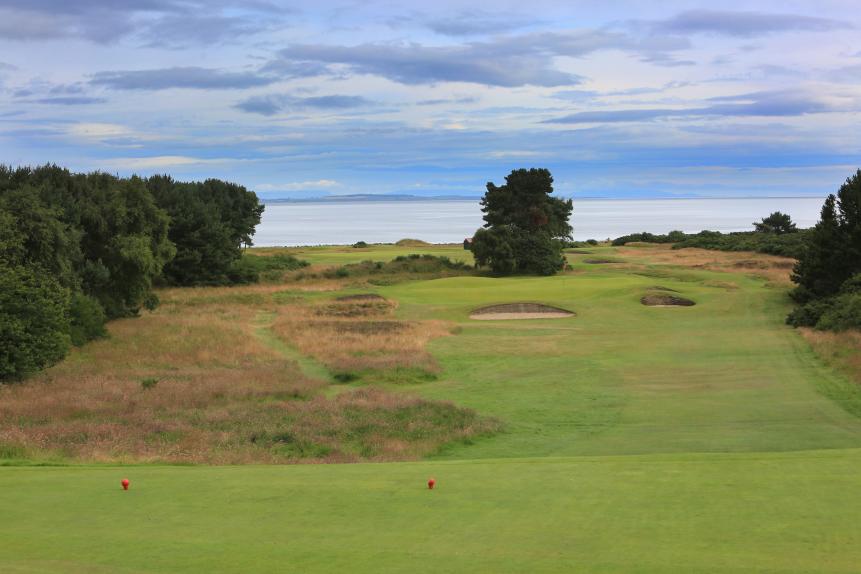 Gary Lisbon Private 95. (NR) Nairn Golf Club (Championship) Nairn, Scotland
Gary Lisbon Private 95. (NR) Nairn Golf Club (Championship) Nairn, Scotland
- World’s 100 Greatest
Golfers might be temped to bypass Nairn on their way north to Royal Dornoch (ranked second on our list) or the expanding Cabot Highlands development, but if they do they’ll miss one of the country’s purest links. The holes run primarily east-west astride the Firth of Moray over ground that’s level but rumpled and studded with clumps of gorse and a mix of bunkers that are both revetted and artistically shaped with fescue edges under the recent direction of Martin Ebert. Old Tom Morris expanded the course shortly after it was first built, but Nairn should equally be considered a Braid design—he remodeled the links twice, adding tees and new bunkers, and built the ninth, 10th and 11th holes in previously unused land on the west end of the course. Nairn hosted the 1999 Walker Cup, won by Great Britain & Ireland. View Course 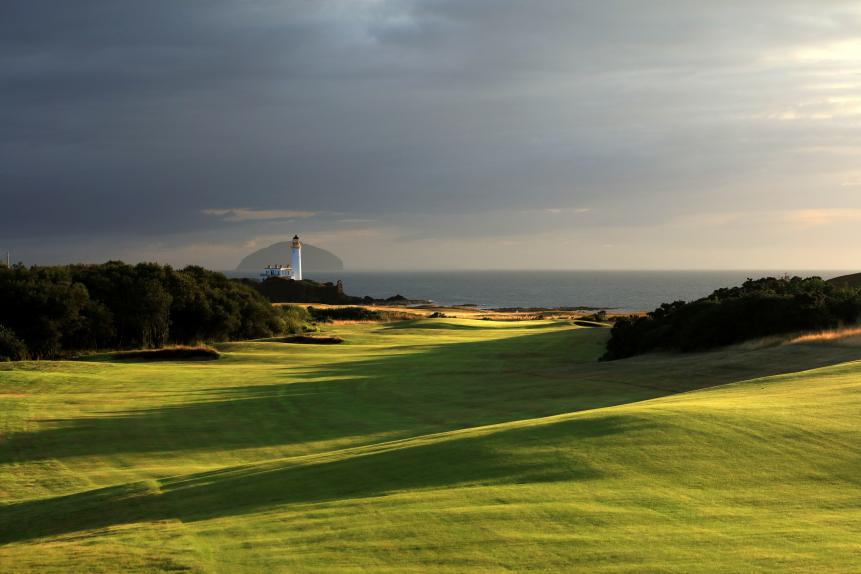 David Cannon Public 94. (NR) Trump Turnberry (King Robert the Bruce) Turnberry, Scotland
David Cannon Public 94. (NR) Trump Turnberry (King Robert the Bruce) Turnberry, Scotland
- World’s 100 Greatest
The first bones of Turnberry’s King Robert the Bruce were laid out by Willie Fernie, the professional responsible for expanding Royal Troon to 18 holes. These and the holes from the championship Ailsa course were lost during the world wars when the land was converted to an air base but returned afterward in the form of the short Arran Course. In 2001, Donald Steel remade them once again, rebranded the Kintyre Course, with a layout that included the addition of several new holes along the property’s northwestern cliffs. In 2016, Martin Ebert, who also remodeled the Ailsa, revamped the course once more, making alterations to the interior of the site and reversing the direction and orientation of the seaside holes to enhance the dramatic vistas. The new name is in reference to the Scottish king who built Turnberry Castle that once stood where the famous lighthouse now does. The result is the debut of Turnberry’s second course on our World’s 100 Greatest ranking. View Course 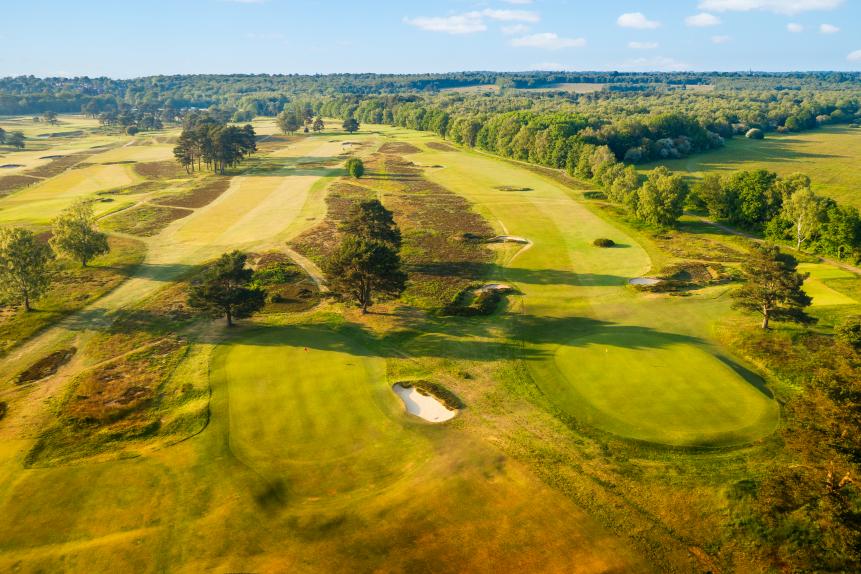 Jason Livy 93. (NR) Walton Heath Golf Club (New) Walton-on-the-Hill, Surrey, England
Jason Livy 93. (NR) Walton Heath Golf Club (New) Walton-on-the-Hill, Surrey, England
- World’s 100 Greatest
Nearly a decade after the Old Course opened, Herbert Fowler returned to Walton Heath to create the New Course, adding a nine holes to an extra nine he’d previously built. The New covers much of the same type of lovely heathlands terrain as the Old Course with tight, springy turf, low fairways and greens, and holes bordered by native grasses and flowering heather. The primary difference is the defense of the fairways where Fowler was much more aggressive positioning bunkers and cross hazards that cut into and choke off landing zones. View Course  Gary Lisbon Private 92. (NR) Portstewart Golf Club (Strand) Portstewart, Northern Ireland
Gary Lisbon Private 92. (NR) Portstewart Golf Club (Strand) Portstewart, Northern Ireland
- World’s 100 Greatest
Although golf architect Willie Park Jr. did fiddle with a few holes in 1913, Portstewart’s Strand Course is mostly the result of amateur architects. A.W. Gow, the greenkeeper from nearby Portrush, staked out the original course by 1910. Eighty years later, math teacher Des Giffin, who was Portstewart’s green chairman, and Michael Moss, the club secretary, added seven new holes, the second through eighth, in dramatic dunes. Mike Stachura, Golf Digest’s longtime Senior Editor of Equipment and savvy course design buff, describes its dramatic setting: “The first tee at the Strand is set on high dunes, like you’re surveying the kingdom, with beach and waves down to your right and all of County Antrim in front. It’s no wonder the television series Game of Thrones used the nearby land as scene-stealers.” View Course 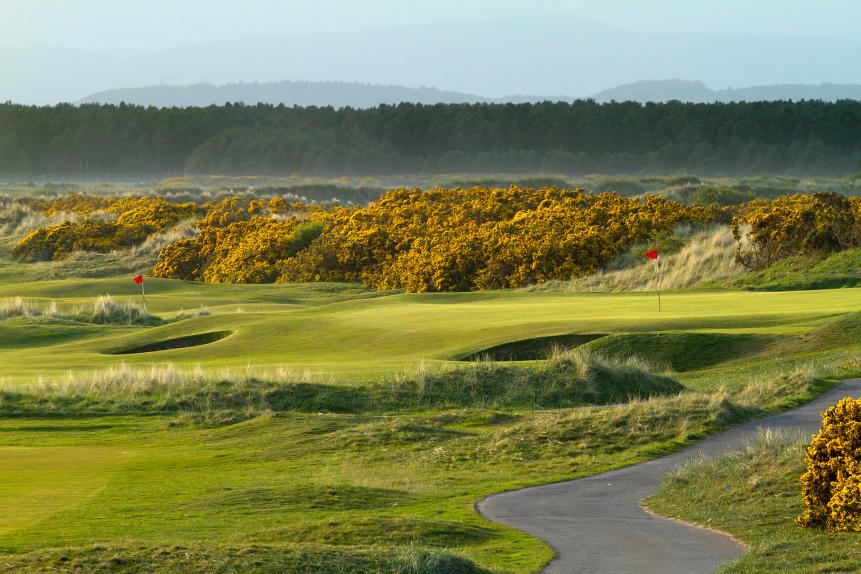 Mark Alexander 91. (NR) St. Andrews Links (New) St Andrews, Scotland
Mark Alexander 91. (NR) St. Andrews Links (New) St Andrews, Scotland
- World’s 100 Greatest
A good debate can erupt about the second-best course at St. Andrews. Many would advocate for the Jubilee or Eden courses, but our panel prefers the New Course, which only seemed new when Old Tom Morris laid it out in 1895, predating the competition by several years. It begins on the far side of the Ladies Putting Course (also known as the Himalayas) and plays adjacent and to the right of the Old Course, closer to the sea. It has the same out-and-back routing with holes that touch the Eden estuary, though the ground is less naturally rumpled and the greens less enormously plateaued. The British golf writer Bernard Darwin predicted the New Course would always suffer as the “relief” course in comparison to the Old, and this is certainly true, but recent work by British designers Martin Ebert and Tom Mackenzie to create more of a sandy dunes appearance throughout has helped give it a more individualized personality and a boost to the aesthetic appeal. View Course 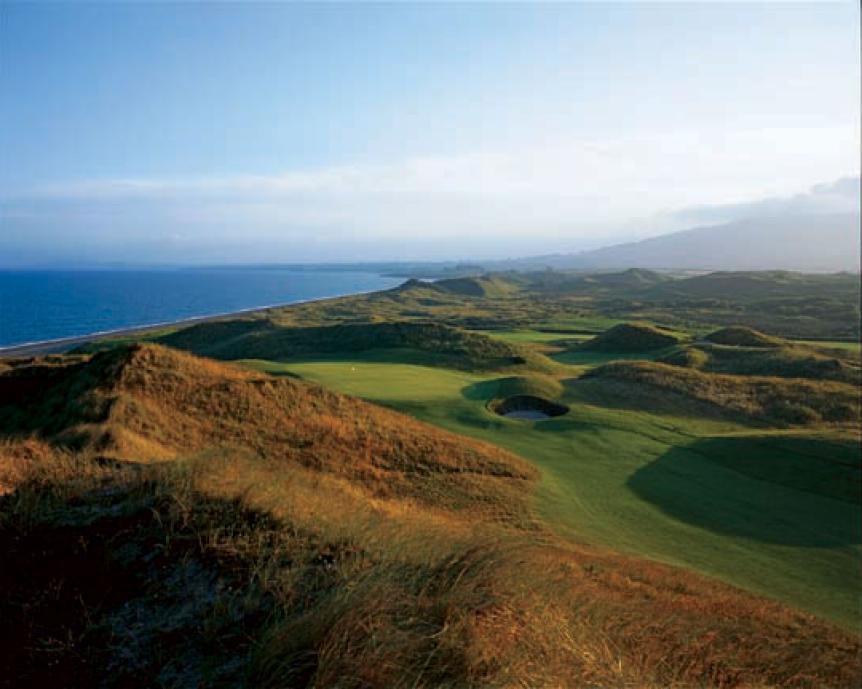 Courtesy of the club Private 90. (93) The European Club Brittas Bay, Co. Wicklow, Ireland
Courtesy of the club Private 90. (93) The European Club Brittas Bay, Co. Wicklow, Ireland
- World’s 100 Greatest
One of the newest courses to be built on genuine Irish linksland, The European Club is the lifetime accomplishment of Pat Ruddy, a golf writer from the 1960s and a golf architect from 1975 onward. He mortgaged his home to buy the land and spent five years designing and building it. It opened in 1992 and is still a family business today. Hard against the Irish Sea’s Arklow Bay, European Club rolls across an untamed landscape with pot bunkers lined in railroad ties and two extra par-3 holes. The routing explores the diverse coastal dunes with returning nines, a marsh off the seventh tee and a burn looping in front of the 18th green with not a single blind shot anywhere. Ruddy, who tinkers with the course the way Donald Ross groomed Pinehurst No. 2, says he was once offered to sell it for 22 million pounds and passed. That makes the Irish design priceless. View Course More from Golf Digest  Golf Digest Logo My favorite courses for sneaking in an emergency 18 on a work trip
Golf Digest Logo My favorite courses for sneaking in an emergency 18 on a work trip 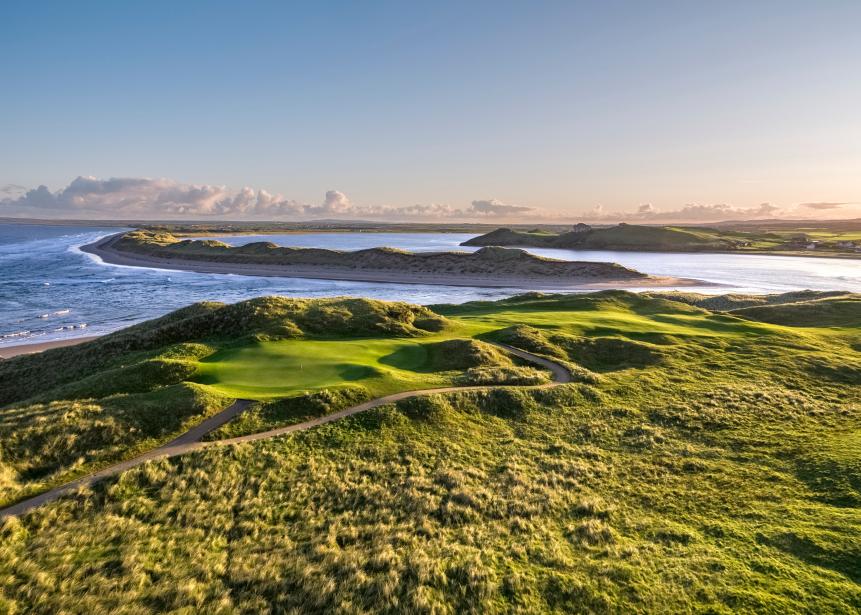 Private 89. (NR) Tralee Golf Club Ardfert, County Kerry, Ireland
Private 89. (NR) Tralee Golf Club Ardfert, County Kerry, Ireland
- World’s 100 Greatest
Tralee, on rugged sand dunes astride Tralee Bay in the southwest corner of Ireland, has long been considered the finest design of Arnold Palmer. Working with architect Ed Seay (partner in Arnie’s design firm) and their associate Bob Walker, the layout was fashioned in the early 1980s in the same manner that Norman would later route Doonbeg, by locating greensites and then scouring the landscape to figure out natural fairways that would lead to them. Tralee is a captivating design, starting along high cliffs, like Pebble Beach, and finishing in high dunes similar to those found at No. 17 Ballybunion. Twelve years ago, Brandon Johnson added a new alternate par-3 seventh on land just crying out to be used as a hole. This is Tralee’s first ranking since 2018. View Course 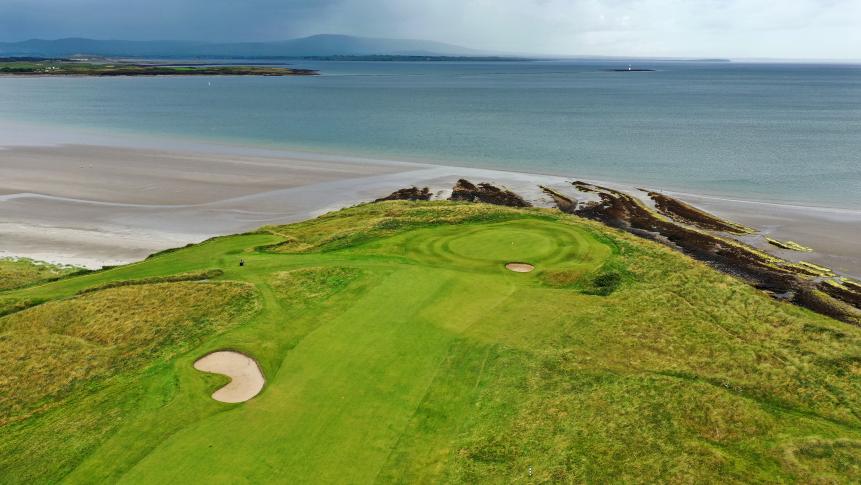 Gary Lisbon 88. (91) County Sligo Golf Club – Rosses Point (Colt Championship) Rosses Point, Co. Sligo, Ireland
Gary Lisbon 88. (91) County Sligo Golf Club – Rosses Point (Colt Championship) Rosses Point, Co. Sligo, Ireland
- World’s 100 Greatest
Significant work was done in 2014 to bring this gem on Ireland’s northwest coast up to the standards and demands of modern players. The old Colt course, set across beautiful links terrain, gained roughly 300 yards through the addition of new tees and green extensions (the par-5 third received an entirely new green 65 yards beyond where it was) along with numerous new fairway bunkers and several putting surface expansions. Holes 12 through 17 skirt the beach making for a lovely run of holes (the course is named for the peninsula of land that juts into Drumcliff Bay), but the real intrigue comes from a system of burns that meander in rhymeless direction through fairways and in front of greens. View Course 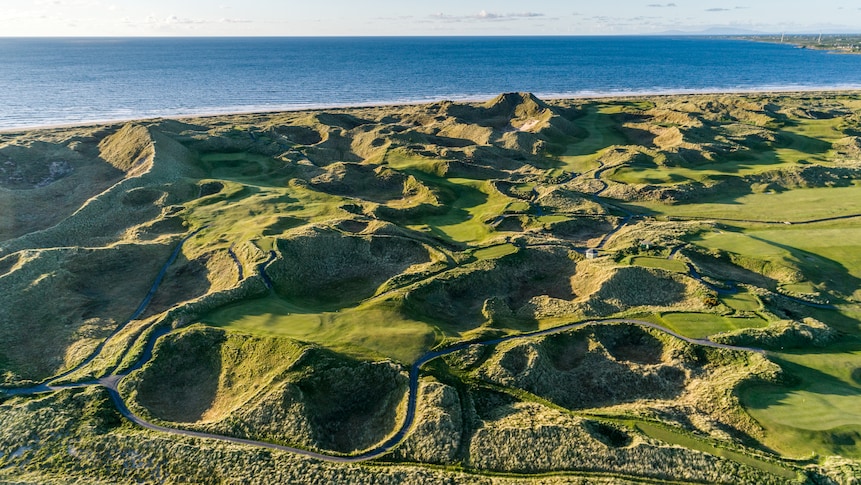 Nick Wall – Airswing Media 87. (NR) Enniscrone (The Dunes) Enniscrone, Co. Sligo, Ireland
Nick Wall – Airswing Media 87. (NR) Enniscrone (The Dunes) Enniscrone, Co. Sligo, Ireland
- World’s 100 Greatest
Enniscrone’s holes in the chop hills along Killala Bay—one through four and 11 through 18—are among the steepest and most breathtaking in golf. They were late in the making. Irishman Eddie Hackett had plans to turn them into spectacular seaside holes in 1974 when he expanded an 80-year-old existing nine that crossed over rather flat farmland well away from the water, but due to cost constraints he could only run his design partially into the foot of the dunes. Twenty-five years later British architect Donald Steel made good on Hackett’s vision when he was allowed to build holes through the deepest valleys and vales, creating a riveting closing stretch with the 14th, 15th, 16th and 17th greens set in the bluffs above the beach. View Course  Courtesy of Highlands Links/Chris Gallow 86. (94) Cape Breton Highland Links Ingonish Beach, Nova Scotia, Canada
Courtesy of Highlands Links/Chris Gallow 86. (94) Cape Breton Highland Links Ingonish Beach, Nova Scotia, Canada
- World’s 100 Greatest
On the opposite Nova Scotia coast from Cabot Cliffs and Cabot Links is the 80-year-old Highlands Links in Cape Breton, a sterling Stanley Thompson design routed to give golfers the full coastal experience, from ocean beach, to deep forest, to river’s edge and back. Thompson even shaped greenside mounds to mimic certain mountain ridges in the distance. A national park operation, Highlands had long been criticized for spotty maintenance, but after a 2010 flood, serious efforts, directed by Canadian golf architect Ian Andrew, were undertaken to restore its luster and improve its turf quality. View Course 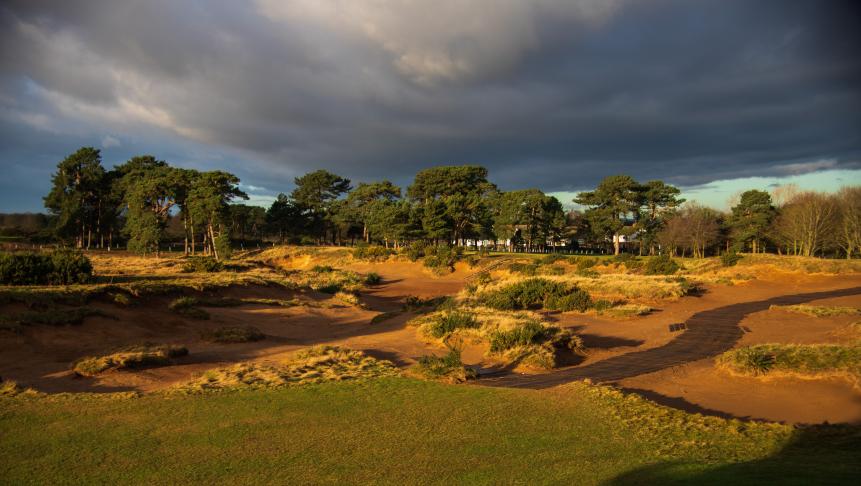 Courtesy of Ganton Golf Club Private 85. (71) Ganton Golf Club Ganton, Ryedale, England
Courtesy of Ganton Golf Club Private 85. (71) Ganton Golf Club Ganton, Ryedale, England
- World’s 100 Greatest
Not everyone has been enamored with Ganton, the great Harry Vardon’s home club. Back in 1949, American Ryder Cupper Jimmy Demaret described the course, still recovering from WWII, as “a sort of Pennsylvania Turnpike with trees.” It’s matured greatly since then. Situated on a pocket of sand in an otherwise inland landscape of clay and rock, Ganton plays firm and fast with holes hemmed in by blooming gorse. Among the course’s difficult hazards include more than 110 vertical-edged bunkers, many deep enough to require wooden steps. Bernard Darwin famously said golfers playing Ganton suffer either sandy or prickly disaster. View Course 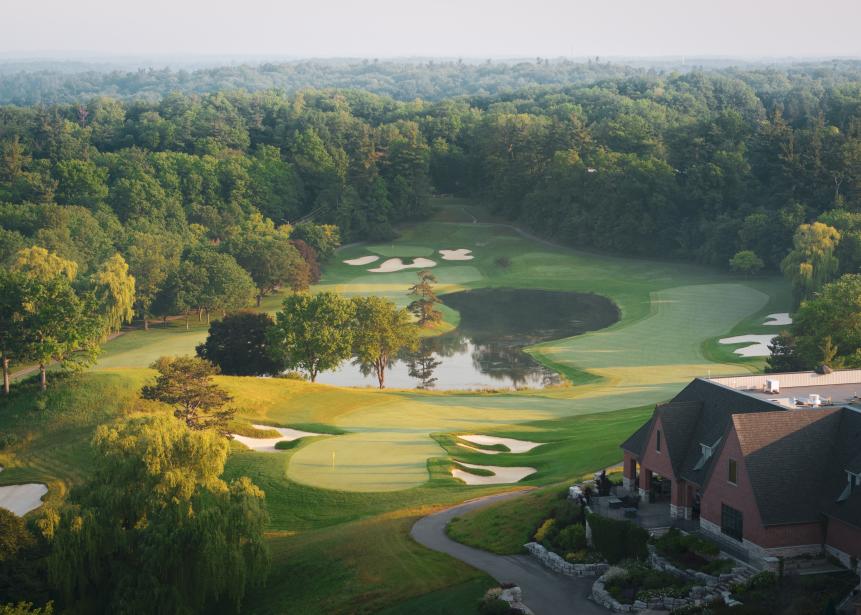 The Preferred Lie Private 84. (22) National Golf Club of Canada Woodbridge, Ontario, Canada
The Preferred Lie Private 84. (22) National Golf Club of Canada Woodbridge, Ontario, Canada
- World’s 100 Greatest
George Fazio once lost a U.S. Open in a playoff to Ben Hogan and his architecture reflected the sort of discipline needed to win that championship: tight well-guarded fairways, big, well-bunkered, fast-paced greens and polished conditions. National G.C. of Canada reflects that and more, with gambling water hazards and double doglegs. In 2005, Tom Fazio, who helped his uncle with the original 1974 design, rebunkered some holes and created a new par-4 16th. View Course  Taku Miyamoto Private 83. (35) Naruo Golf Club Kawanishi , Hyogo, Japan
Taku Miyamoto Private 83. (35) Naruo Golf Club Kawanishi , Hyogo, Japan
- World’s 100 Greatest
The most mountainous of the Japanese courses ranked on our World 100 Greatest, Naruo reminds many Americans of courses found on the Monterey Peninsula, with hilly fairways slashed by gulleys that run to the sea lined by dense Monterey-like pines. Originally designed in 1920 by brothers Harry, Bert and Joseph Crane, it was rebunkered by C.H. Alison during his 1930s tour of the country. With that dramatic deep bunkering, Naruo looks both lovely and lethal. Only the flattish greens, many on hilltop locations, seem out of place. View Course  Mark Alexander Private 82. (NR) Royal Portrush Golf Club (Valley) Portrush, Northern Ireland
Mark Alexander Private 82. (NR) Royal Portrush Golf Club (Valley) Portrush, Northern Ireland
- World’s 100 Greatest
Tom Doak calls the Royal Portrush’s Valley course “the most underrated golf course in Ireland and the North.” That was before the fifth and sixth holes, out in the massive seaside dunes, were sacrificed to create the new seventh and eighth holes on the Dunluce course in 2015 for the 2019 Open Championship. To make up for the loss, Martin Ebert molded several new holes, including the par-3 15th, the par-3 17th and the par-4 18th that now brings the routing home closer to the clubhouse. What hasn’t changed is the sense of playing down between some of golf’s greatest sand hills and the debate about whether there’s a better one-two punch in links golf. View Course 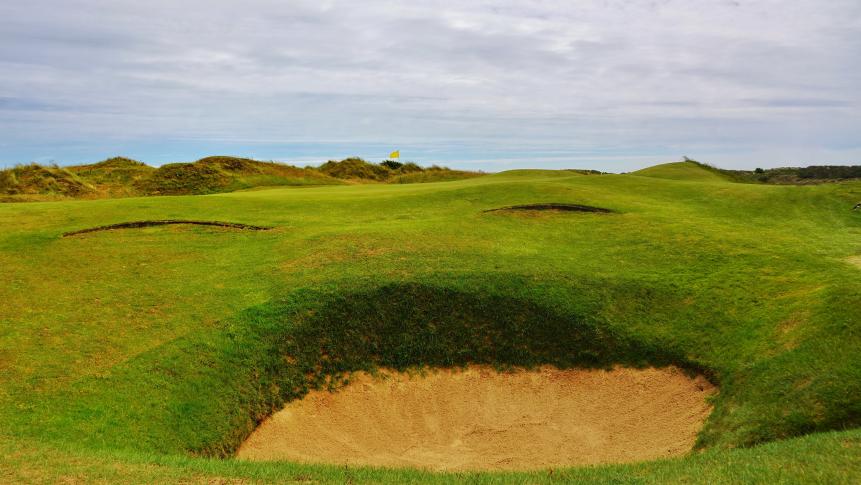 Jon Cavalier/@LinksGems Private 81. (54) Rye Golf Club (Old) Rye, East Sussex, England
Jon Cavalier/@LinksGems Private 81. (54) Rye Golf Club (Old) Rye, East Sussex, England
- World’s 100 Greatest
A great myth is that Rye hasn’t changed in a century. In truth, during World War II the Royal Army built pillboxes and buried fuel storage tanks on the existing course. Architect Guy Campbell reclaimed the course in 1946, using a bulldozer to create new holes. To play such seemingly natural holes as the par-3 seventh on Rye’s rolling links today, you’d never suspect it. Rye has long been considered the toughest par 68 on earth. This ranking confirms that, though it’s a mystery why its placement plummeted when nearly every other links jumped forward. View Course 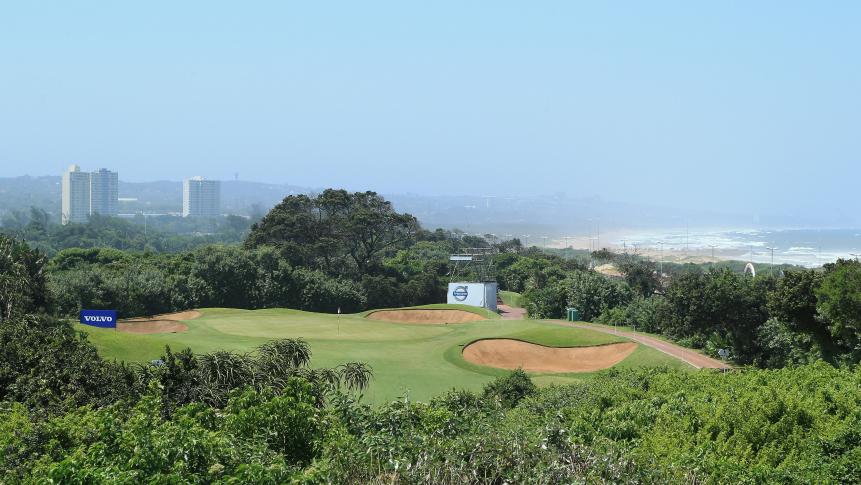 Richard Heathcote Private 80. (97) Durban Country Club Durban, KwaZulu-Natal, South Africa
Richard Heathcote Private 80. (97) Durban Country Club Durban, KwaZulu-Natal, South Africa
- World’s 100 Greatest
Packed into a scant 125 acres across a highway from Blue Lagoon Beach and the Indian Ocean, Durban spent most of the 20th century with the honor of being the African continent’s premier piece of golf architecture. The holes running along the eastern boundary—mostly the first nine—play through the coastal bush over severely heaving dunes with movements that can cause seasickness, particularly at the par-5 eighth and par-4 17th. The western half of the course is more treelined and sedate, and one wonders if a different routing could have taken the game more effectively in and out of the best land. Durban’s return to the rankings in 2022 (it was No. 96 in 2018 but later fell) could have been short-lived as the course suffered massive flooding in the spring of 2022 that put 15 holes under water. It reopened just as voting for the 2024 ranking closed, but our panelists have faith it will be back as strong as ever. View Course 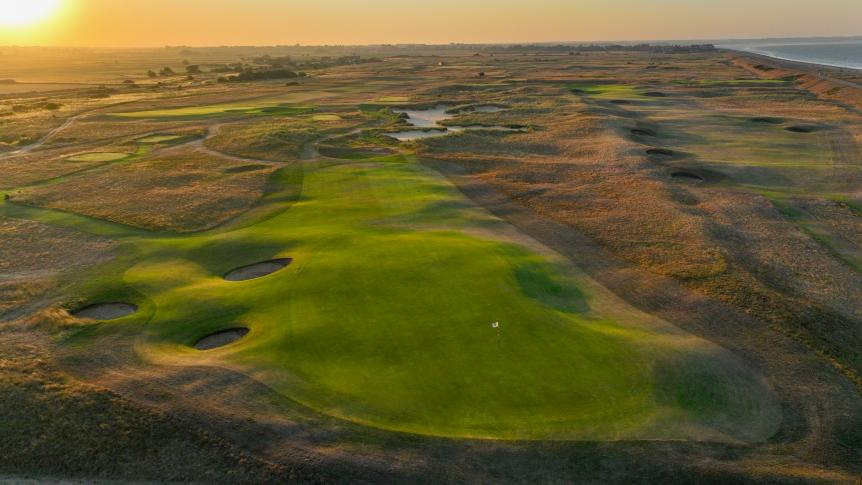 Gary Lisbon Private 79. (81) Royal Cinque Ports Golf Club Deal, Kent, England
Gary Lisbon Private 79. (81) Royal Cinque Ports Golf Club Deal, Kent, England
- World’s 100 Greatest
Resting just three miles from Royal St. George’s (No. 20), the Royal Cinque Ports links rolls over gentle oceanfront sand dunes with some holes playing off a single prominent ridge that runs the length of the property. Cinque (pronounced sank) Ports hosted two British Opens, in 1909 won by J.H. Taylor, and 1920 won by George Duncan. It was slated to host three others, in 1915, 1938 and 1949, but a combination of a World War and ocean storms forced officials to move the championship elsewhere each time. The present course is far different than Tom Dunn’s original design. Before the 1920 Open, James Braid rearranged the layout, adding several new holes, including all four of the present par 3s. In the process, he abandoned the beloved, blind par-3 fourth, called “Sandy Parlour,” but his replacement fourth, playing off a dune toward the ocean, has become beloved as well. View Course 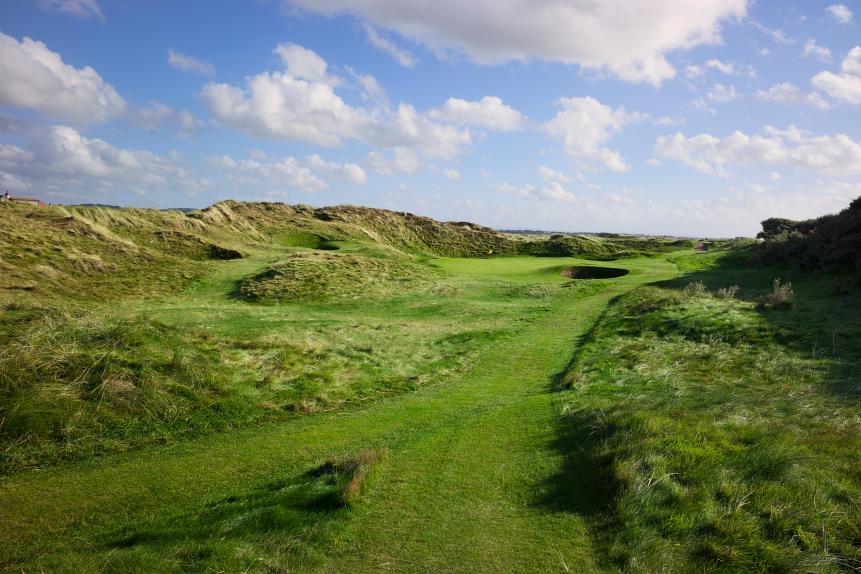 Clive Barber/Courtesy of the club Private 78. (98) Western Gailes Golf Club Irvine, Scotland
Clive Barber/Courtesy of the club Private 78. (98) Western Gailes Golf Club Irvine, Scotland
- World’s 100 Greatest
Western Gailes is perhaps the least-known grand old Scottish links. It’s located north of Royal Troon, just off the Firth of Clyde, squeezed on the east by active railroad tracks (like Troon), and thus its north-south routing over and between rolling sand dunes seems far tighter than its neighbors. Holes one through four, all par 4s, head north, then five through 13 march due south along the beach, with fairways mostly aimed southeast or southwest. The closing five play due north and sport some of the most intense bunkering on the 18. The club insists Fred Morris, its first greenkeeper laid out the course, but we say Willie Fernie, who expanded Troon to 18 holes in the 1880s, did it. View Course 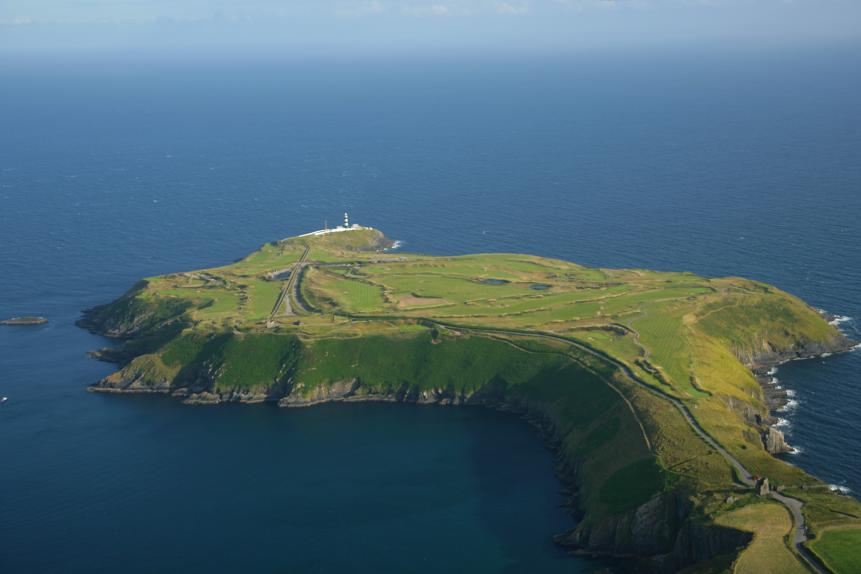 Courtesy of the club Private 77. (85) Old Head of Kinsale Kinsale, Co. Cork, Ireland
Courtesy of the club Private 77. (85) Old Head of Kinsale Kinsale, Co. Cork, Ireland
- World’s 100 Greatest
In the 1980s, the golf potential of this 220-acre swollen thumb of land poking into the Atlantic had many course architects excited. The job went to Ron Kirby, one-time design partner of Gary Player and former associate of Dick Wilson, Robert Trent Jones, and later, Jack Nicklaus. He consulted with Irish legends Paddy Merrigan, Eddie Hackett, Joe Carr and Liam Higgins. Kirby lived on the site for two years, determined to find an ideal routing that would maximize the rocky ocean cliffs that encircle the peninsula. It opened in 1996 with nine holes along ledges 300 feet above the surf. Kirby later returned to add a second nine, relocating the par-3 13th to cling along an ocean slope. View Course 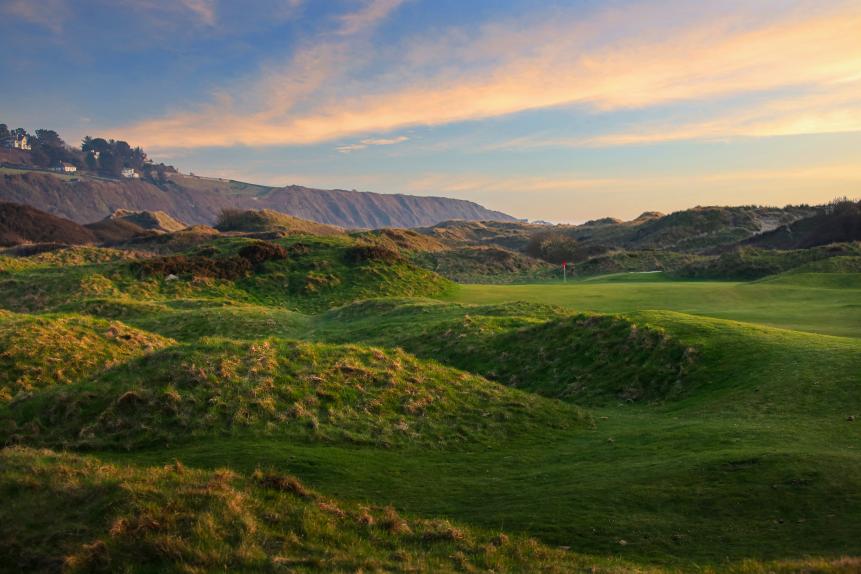 Kevin Murray 76. (NR) Royal St. David’s Golf Club Harlech, Wales
Kevin Murray 76. (NR) Royal St. David’s Golf Club Harlech, Wales
- World’s 100 Greatest
Royal St. David’s, Bernard Darwin wrote, “fascinates at first glance.” The course plays under the visage of Harlech Castle, a fortress set high atop sheer bluffs and constructed under the orders of Edward I in the 1280s during his conquest of Wales. The interior holes to the east cut in different directions across milder terrain over low, speedbump-like ground movements, and the holes along the western edge and to the south, particularly 11, 14 and 15, camber through high dunes that divide the links from Cardigan Bay in the St. George’s Channel. Like Brora, Pasatiempo and Garden City, the round finishes with a par 3. View Course 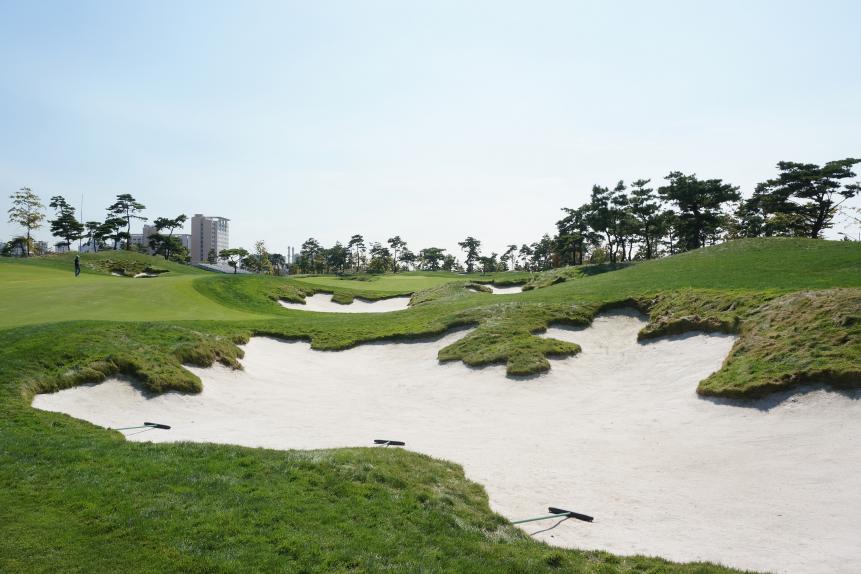 Courtesy of the club Private 75. (84) Jack Nicklaus Golf Club Icheon, Gyeonggi , South Korea
Courtesy of the club Private 75. (84) Jack Nicklaus Golf Club Icheon, Gyeonggi , South Korea
- World’s 100 Greatest
Lying in the shadow of skyscrapers in the Songdo International Business District, this is an impressive Nicklaus design, one that transformed a flat, dull site into a surprisingly rolling, pine-dotted layout with water on 11 holes, equitably distributed with six hazards to the left and five to the right. Despite the site being inland, artificial rocks edging most of the lakes leave the impression of a jagged coastline. Jack Nicklaus Golf Club Korea hosted the 2015 Presidents Cup, won by the U.S. team captained by Jay Haas over the International side headed by Nick Price. It was the first Presidents Cup contested in Asia. View Course More from Golf Digest 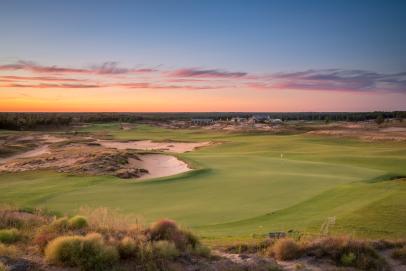 Golf Digest Logo Our definitive ranking of the best states for public golf
Golf Digest Logo Our definitive ranking of the best states for public golf 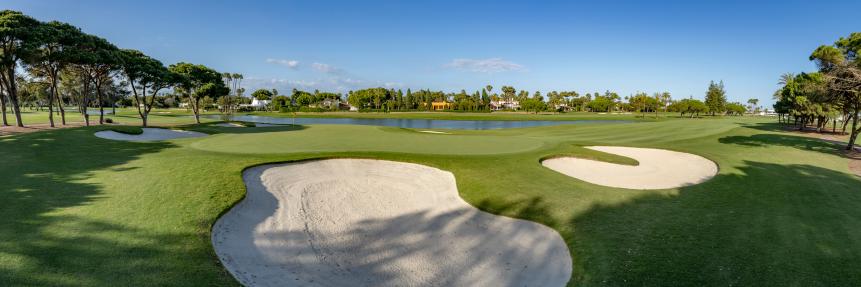 Toni-Doro/Courtesy of Sotogrande Club Private 74. (NR) Real Club de Golf Sotogrande Sotogrande, Cádiz, Spain
Toni-Doro/Courtesy of Sotogrande Club Private 74. (NR) Real Club de Golf Sotogrande Sotogrande, Cádiz, Spain
- World’s 100 Greatest
Sotogrande, located just off the Mediterranean Sea, was the first course Robert Trent Jones built in Europe and shares many of the same ingredients that distinguish Valderrama (No. 29), the higher ranked of RTJ’s two Spanish gems. In fact, Valderrama, located just two miles higher into the foothills of Cadiz, was originally the second course for Sotogrande members and residents before being acquired by a separate group of investors. The design is American mid-century, defined by tight holes that dogleg through corridors of twisted cork trees and large greens pinched in front by bunkers. The course was the first on the continent to use American 419 Bermuda in the fairways, and water hazards come into play on five of the last seven holes, including the photogenic par 3s at 13 and 17. View Course 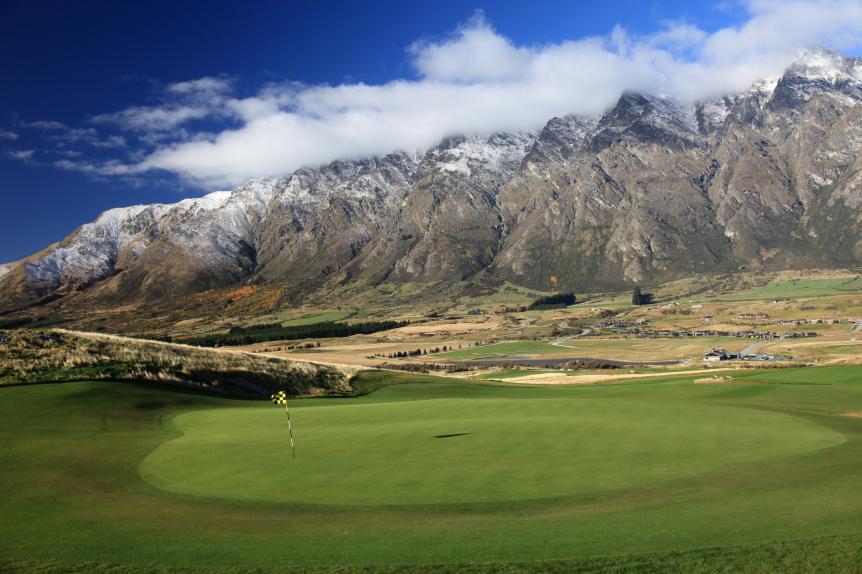 Gary Lisbon 73. (T-62) Jack’s Point Golf Club Jack’s Point, Queenstown, New Zealand
Gary Lisbon 73. (T-62) Jack’s Point Golf Club Jack’s Point, Queenstown, New Zealand
- World’s 100 Greatest
John Darby, a New Zealand land planner and golf architect, routed Jack’s Point from a valley clubhouse up onto a plateau and down again to offer sterling views of Lake Wakatipu and the mile-high Remarkables Mountains. Many have likened Jack’s Point opening uphill holes to those of Gullane in Scotland. But Australian writer and course designer Darius Oliver is less enamored, writing: “Darby decided to attack the hills and get his holes as quickly and as close to the [lake] edge as he possibly could. The result is at times an awkward mix of quite spectacular golf with some difficult uphill and downhill slogs.” Our ranking would suggest Oliver’s is the minority opinion. View Course 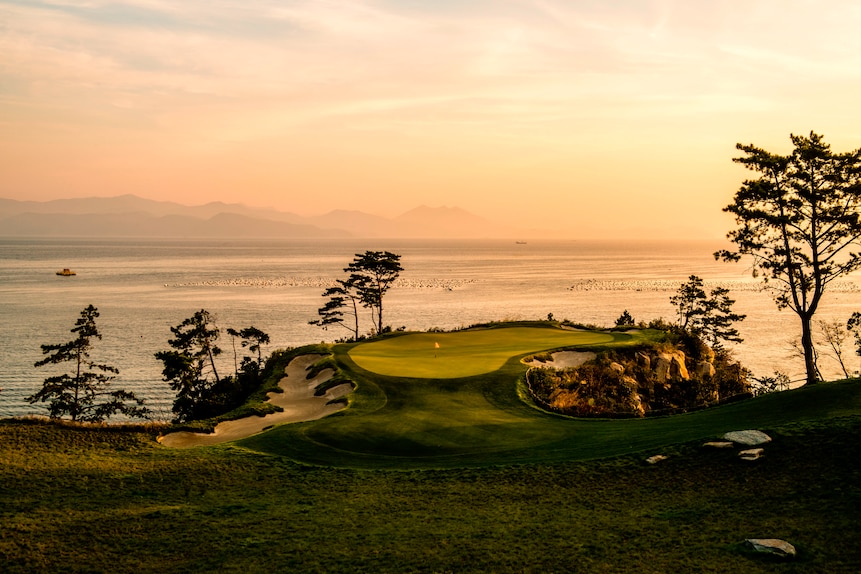 Joann Dost Private 72. (NR) South Cape Owners Club Namhae, Gyeongsangnam , South Korea
Joann Dost Private 72. (NR) South Cape Owners Club Namhae, Gyeongsangnam , South Korea
- World’s 100 Greatest
Now open for over a decade, this Kyle Phillips design has gained attention as visitors from around the world compare its stunning design to everything from Kingsbarns (another Phillips design, which also features ocean views from every tee), to Teeth of the Dog (South Cape has even more holes along the coast) to Cabot Cliffs (there will be a debate as to which has the more dramatic ocean-carry 16th hole, with Point Hardy at Cabot Saint Lucia also jumping into the ring) to the granddaddy of ocean courses, Pebble Beach. If anything, South Cape’s tiny downhill par-3 14th to a thumb in the ocean is more treacherous than the short 7th at Pebble Beach. The course fell out of the rankings in 2022 but is now back inside the top 75. View Course 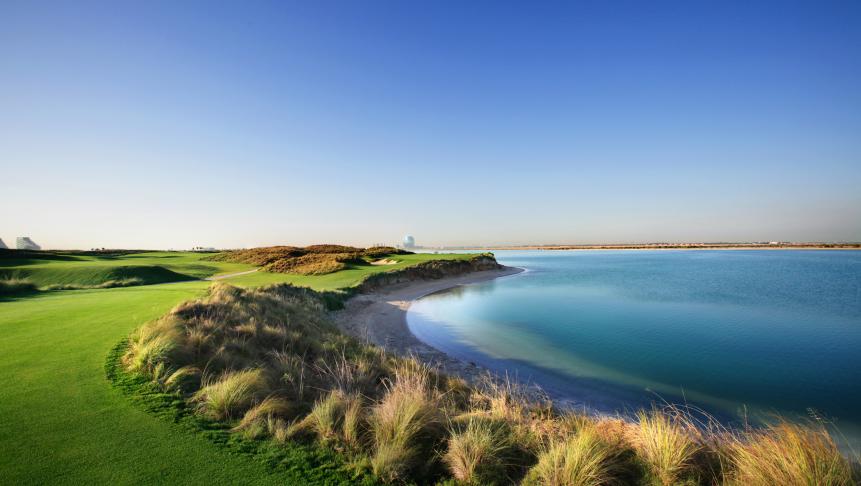 Private 71. (34) Yas Links Abu Dhabi, UAE
Private 71. (34) Yas Links Abu Dhabi, UAE
- World’s 100 Greatest
Designed by American Kyle Phillips, whose breakthrough course was No. 22 Kingsbarns in Scotland, Yas Links is part of a massive Arabian Gulf entertainment complex that includes a Formula 1 racetrack and a Ferrari World amusement park. As the name suggests, Phillips fashioned this as a warm-weather links, using two million cubic yards of sand dredged from an adjacent marina to give the layout the shape and contour, then covering everything with salt-tolerant Paspalum turf. Eight holes play along a vast intracoastal waterway that leads to the Persian Sea, including holes 13, 14 and 16 through 18, a most invigorating stretch. View Course 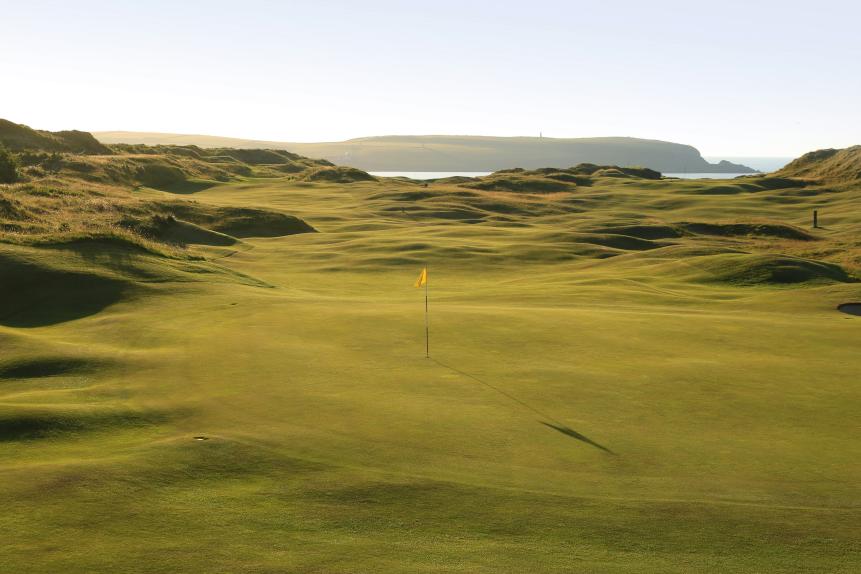 Private 70. (82) St. Enodoc Golf Club (Church) Wadebridge, Cornwall, England
Private 70. (82) St. Enodoc Golf Club (Church) Wadebridge, Cornwall, England
- World’s 100 Greatest
This is St. Enodoc’s second appearance on this list since the inaugural World’s 100 Greatest Courses ranking in 2014, when it came in at No. 99. The layout, located in Cornwall in the extreme southwest corner of England, traverses some of the most ideal natural golf land in the UK, bumping through sand hills on the banks of the River Carmel estuary. The routing takes full advantage of the land, turning, twisting and crossing as it works out to far fields, having too much fun to be in any hurry home. One of the world’s most famous hazards is located here, the Himalaya bunker on the short, blind par-4 sixth, a massive crater carved into a dune that was once over 70-feet high, though less so now due to wind and erosion. View Course 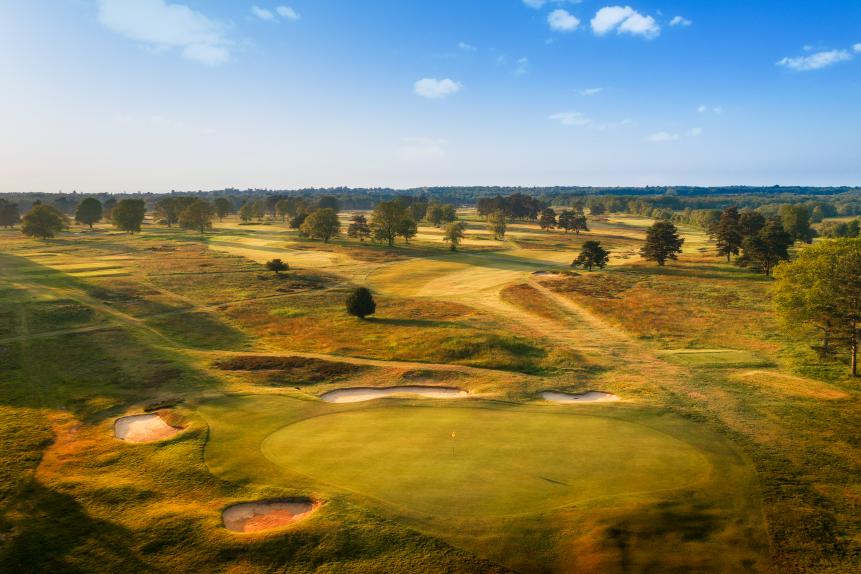 Jason Livy 69. (NR) Walton Heath Golf Club (Old) Walton-on-the-Hill, Surrey, England
Jason Livy 69. (NR) Walton Heath Golf Club (Old) Walton-on-the-Hill, Surrey, England
- World’s 100 Greatest
Herbert Fowler’s earliest design, done in 1904, is an out-and-back routing with rippling fairways, tight turf, cross bunkers, ground-hugging greens and fields of heather, all borrowed from coastal links. One writer has suggested Walton Heath ranks with Pine Valley as the best neophyte design in golf. It opens with a par 3, closes with five stern holes, including the par-5 16th, which is played as a long 4 for tournaments. Donald Steel altered holes and added length early in this century. View Course 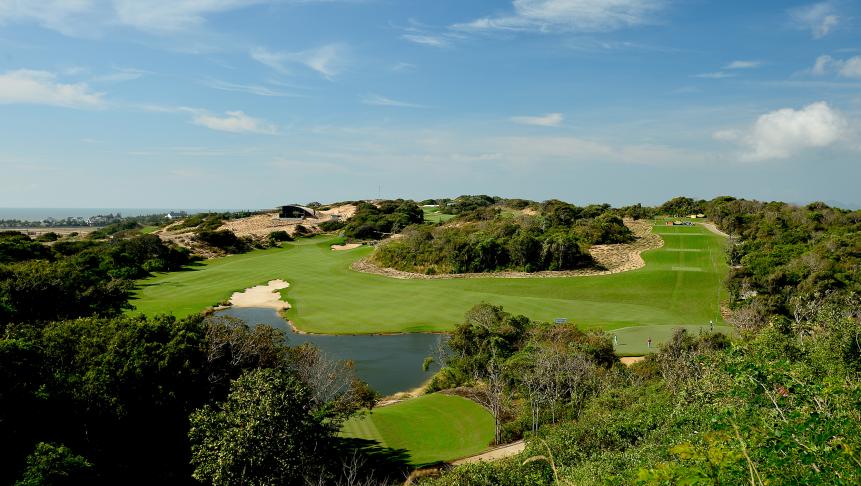 2015 Khalid Redza/Asian Tour/Getty Images 68. (65) The Bluffs Ho Tram Strip Bà Rịa, Vũng Tàu, Vietnam
2015 Khalid Redza/Asian Tour/Getty Images 68. (65) The Bluffs Ho Tram Strip Bà Rịa, Vũng Tàu, Vietnam
- World’s 100 Greatest
This is a 2014 design by Greg Norman, an Australian who now lives in Florida, so it’s no surprise that Bluffs Ho Tram is very reminiscent of a Florida golf course, Jupiter Hills. Like Jupiter, it’s separated from the ocean by a highway, but plays through dramatic sand dunes covered in tropical vegetation, has joint fairways and even a pair of par 3s playing from a common dunes-top tee box complex to greens in opposite directions. As the name suggests, The Bluffs has some dramatic elevations, with the long par-3 15th green at the highest point, 165 feet above the South China Sea. View Course  Gary Lisbon Private 67. (56) Loch Lomond Golf Club Luss by Alexandria, Scotland
Gary Lisbon Private 67. (56) Loch Lomond Golf Club Luss by Alexandria, Scotland
- World’s 100 Greatest
Jay Morrish and Tom Weiskopf were the first American architects to work in Scotland, not on the coast but west of Glasgow on the shore of Loch Lomond. The design is mostly the work of Weiskopf, who lived on site supervising construction while Morrish recovered from a heart attack at home. Opened in 1992, it’s a graceful layout, the third, sixth, seventh and 18th holes touching the shoreline, others winding through inland hazards of oaks, sculptured bunkers, streams, marsh and a pond. There are a pair of reachable par 4s, the ninth and the 14th, the latter a favorite of Weiskopf’s, who passed away in 2022. View Course 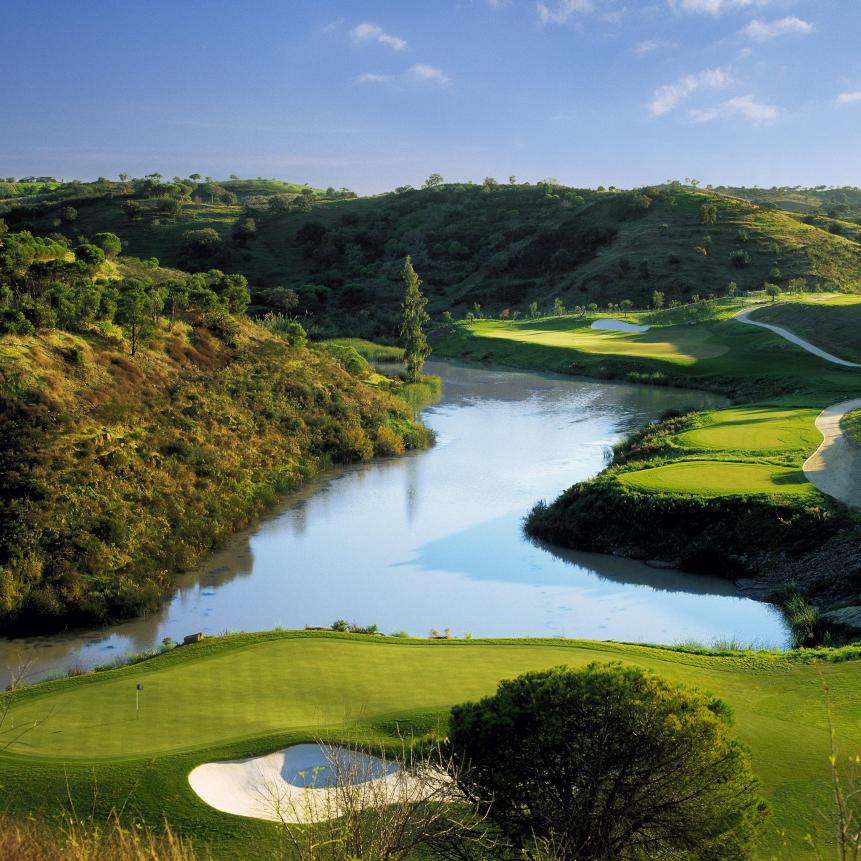 Courtesy of the club Private 66. (27) Monte Rei Golf and Country Club Vila Nova de Cacela, Algarve, Portugal
Courtesy of the club Private 66. (27) Monte Rei Golf and Country Club Vila Nova de Cacela, Algarve, Portugal
- World’s 100 Greatest
Monte Rei leaped into the World 100 for the first time two years ago and is the second-highest ranked international course from Nicklaus Design. How could that be? Well, let’s see: It’s located on a panoramic site in the Algarve region of southern Portugal just 3.5 miles from the Atlantic Ocean with holes that roll over 1,000 acres of crumpled, arid foothills. The design is a blend of modern and classic—wide fairways, aggressive bunkering and shallow, angled greens that hook around hazards, including a variety of American-style water features. Troubled economic times when the course opened has meant the resort development is peacefully underbuilt, an advantage in accentuating a feeling of remoteness in the surrounding hill country. View Course 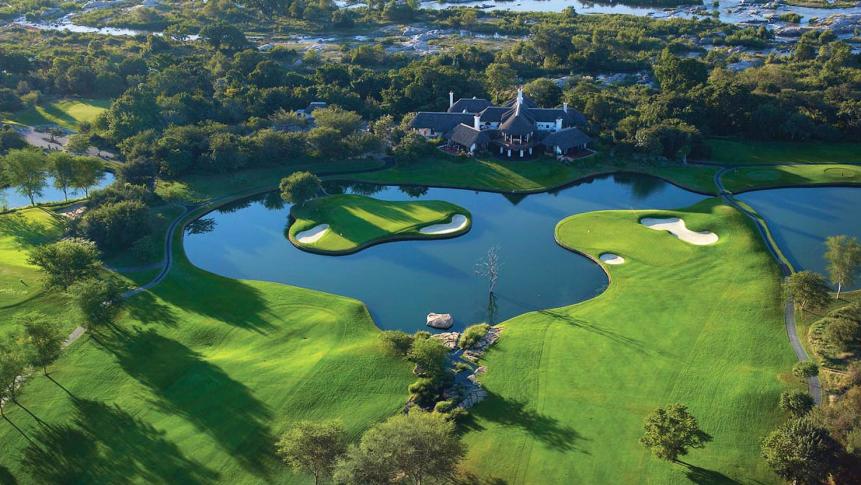 Courtesy of the club 65. (47) Leopard Creek Country Club Malelane, Mpumalanga, South Africa
Courtesy of the club 65. (47) Leopard Creek Country Club Malelane, Mpumalanga, South Africa
- World’s 100 Greatest
Intended to merge with its Bushveld environs, what with Kruger National Park and the Crocodile River on the north and west, the Gary Player-designed Leopard Creek is really more akin to a polished, immaculate American layout, with a manmade stream diagonally slashing in front of the 14th green, the fifth, 15th, 16th and 18th greens guarded by stone-bulkheaded ponds and the par-5 18th green on an island. But no course in America has views of elephants, hippos and crocodiles in the wild. View Course 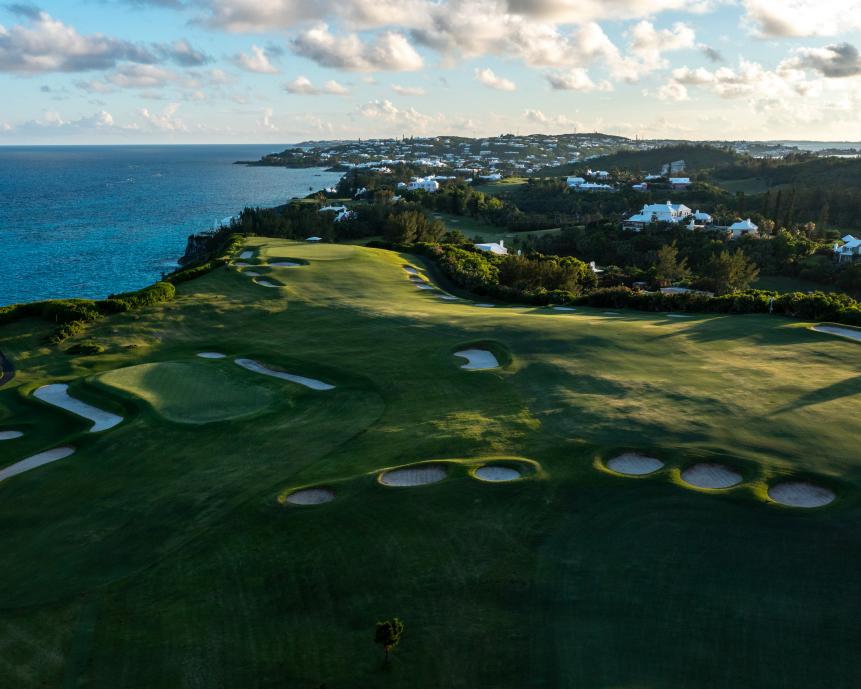 John Singleton 64. (33) Mid Ocean Club St. George’s, Bermuda
John Singleton 64. (33) Mid Ocean Club St. George’s, Bermuda
- World’s 100 Greatest
This was C.B. Macdonald’s lone international design, done in the early 1920s with his faithful assistant Seth Raynor, who according to ship records, made most of the trips to the site. Spurred by the 18th Amendment, which established alcohol prohibition in America, Macdonald and his partners bought a collection of onion and potato fields on the northeast coast of Bermuda to build the course. Macdonald used his pet template holes mainly on the par 3s—Short, Eden, Biarritz and Redan are all represented—but the par-4 fifth is the standout, with its bite-off-what-you-dare tee shot over Mangrove Lake, perhaps the most famous version of his Cape hole. View Course More from Golf Digest 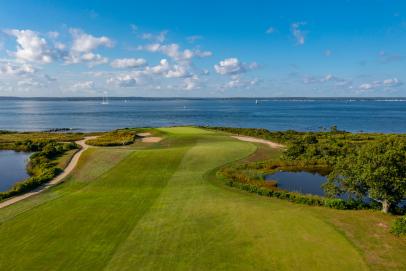 Golf Digest Logo The 10 best Seth Raynor golf courses
Golf Digest Logo The 10 best Seth Raynor golf courses 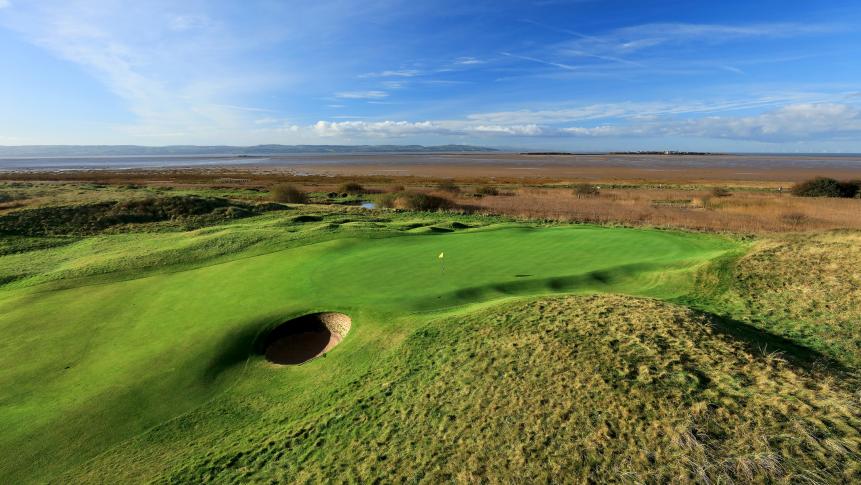 Photo by David Cannon/Getty Images Private 63. (T-77) Royal Liverpool Golf Club Hoylake, Merseyside, England
Photo by David Cannon/Getty Images Private 63. (T-77) Royal Liverpool Golf Club Hoylake, Merseyside, England
- World’s 100 Greatest
Hoylake is a layout of stark contrasts—a series of splendid natural holes within coastal sand dunes (holes attributed to a 1930s H.S. Colt remodeling), with a less scenic start and finish inland on dead flat land. Still, the first hole, a stern dogleg-right around an internal out-of-bounds, is considered one of the most testing opening holes in links golf. Almost 20 years ago, our architecture editor emeritus Ron Whitten suggested that Royal Liverpool, which hadn’t seen an Open since 1967, was past its prime as a championship venue. It has hosted three Opens since then, including two won by a pair of the modern era’s greatest players, Tiger Woods in 2006 and Rory McIlroy in 2014. It has had an uncanny knack for crowning the game’s best player of any given time, though we’re not yet sure of what to make of Brian Harman’s six-stroke victory in 2023. View Course 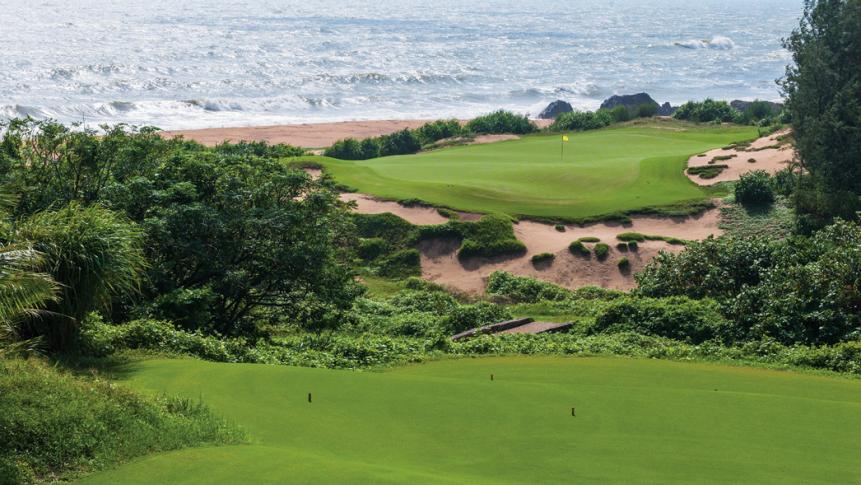 Courtesy of Shanqin Bay G.C. Private 62. (38) Shanqin Bay Golf Club Wanning, Hainan, China
Courtesy of Shanqin Bay G.C. Private 62. (38) Shanqin Bay Golf Club Wanning, Hainan, China
- World’s 100 Greatest
It has wide corridors flanked by jungle gunch, big intricate greens and eye-catching ragged-edge bunkering, yet Shanqin Bay is perhaps the most controversial design the highly regarded firm of Bill Coore and Ben Crenshaw has ever built. Partly because it was created on a site far more rugged than the duo normally tackle (until they dove into Cabot Saint Lucia)—land that housed a World War II Army barracks, complete with stone tunnels. Coore’s routing manages to traverse the mountainous property, but only with the help of some blind shots, two holes around an artificial irrigation pond and a very unusual finish with two drivable par 4s among the last three holes. All its quirks are worth it, for its proximity along the South China Sea is outstanding. View Course  Mark Alexander 61. (89) Prestwick Golf Club Prestwick, Scotland
Mark Alexander 61. (89) Prestwick Golf Club Prestwick, Scotland
- World’s 100 Greatest
We should rejoice in the fact that the World’s 100 Greatest has room for at least one museum piece of golf architecture—an authentic relic from a time when golfers played cross-country without benefit of crisply mown turf and inviting targets. The third hole demands a forced carry over the notorious Cardinal bunker. There’s a blind tee shot over a ridge dubbed the Himalayas into par-3 fifth green, a blind approach shot down an escarpment to the 15th green and another blind approach over dunes known as The Alps to reach green on the par-4 17th. Prestwick hosted 24 Open Championships but none since 1925. That doesn’t matter. It’s an anachronistic design worth preserving. View Course  Courtesy: Fairmont Hotels & Resorts 60. (88) Banff Springs Golf Club (Thompson) Banff, Alberta, Canada
Courtesy: Fairmont Hotels & Resorts 60. (88) Banff Springs Golf Club (Thompson) Banff, Alberta, Canada
- World’s 100 Greatest
Where No. 77 Old Head in Ireland plays along the top of escarpments, Banff in the Canadian Rockies of Alberta lies beneath escarpments, with near-vertical cliffs of Mount Rundle towering 3,000 feet over almost every fairway. The course, another masterful design by Canadian Stanley Thompson, is tucked into the narrow Y-shaped valley formed by the Bow and Spray Rivers. Bunkering at Banff may be the best of Thompson’s career. There are 150 of them, often in circular clusters, with ebbs and flows in their shapes that mirror mountain peaks. View Course 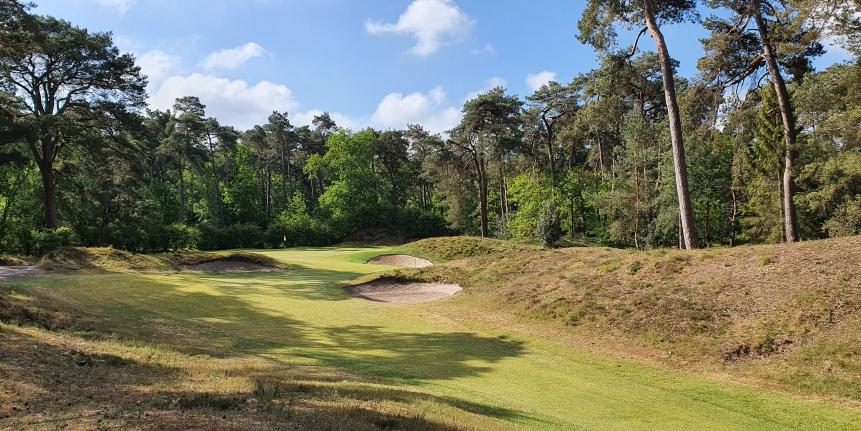 Courtesy of the club Private 59. (40) Utrecht Golfclub De Pan Bosch en Duin, Utrecht, Netherlands
Courtesy of the club Private 59. (40) Utrecht Golfclub De Pan Bosch en Duin, Utrecht, Netherlands
- World’s 100 Greatest
Debuting in the World 100 rankings in 2022, de Pan feels like it was cut through the dark woods of a medieval fairy tale, though the city of Utrecht is just two miles away. The holes wander, spin and double back as if searching for a way out, with very few offering any glimpse of another. A beautiful collection of short par 4s await, including the sharp, partially blind dogleg seventh and the remarkable 10th snaking through a narrow passage of mounds. Colt’s golf influence in the Netherlands, here as well as at Kennemer and Koninklijke Haagsche (aka Royal Hague), is almost as significant as it is in the London Heathlands, which makes sense given the similarities of the landscapes. View Course  Courtesy of the club Private 58. (76) Capilano Golf & Country Club West Vancouver, British Columbia, Canada
Courtesy of the club Private 58. (76) Capilano Golf & Country Club West Vancouver, British Columbia, Canada
- World’s 100 Greatest
Capilano is definitely Old School updated to modern times. The Stanley Thompson design, with its holes terraced in pairs into the mountainside. Wow nearly 90 years old, the fairways are lined by enormous Douglas fir, hemlock and cedar, all giving the mistaken impression that the corridors are narrow. Thompson’s bunkering is spectacular and prolific. In recent years, Doug Carrick has rebuilt three greens and expanded others to accommodate desired green speeds of 10 to 11 on a Stimpmeter. From the elevated first tee, the city of Vancouver, five miles south, is visible, and the last six holes provide outstanding views of the Coastal Range, particularly Hollyburn Mountain. View Course 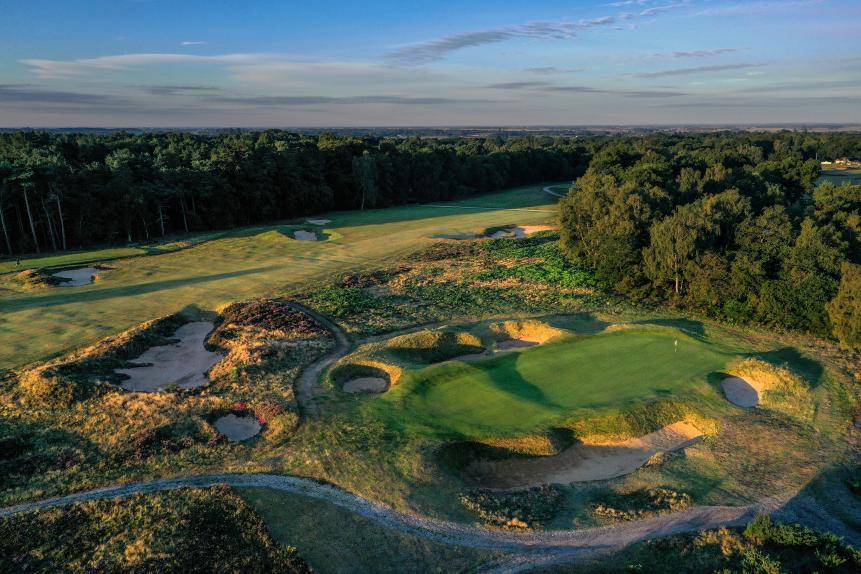 David Cannon/Getty Images Private 57. (T-67) Woodhall Spa Golf Club (Hotchkin) Woodhall Spa, Lincolnshire, England
David Cannon/Getty Images Private 57. (T-67) Woodhall Spa Golf Club (Hotchkin) Woodhall Spa, Lincolnshire, England
- World’s 100 Greatest
This par-73 layout is named for obscure architect S.V. Hotchkin, who purchased the club in the early 1920s and remodeled the course, which consisted of a 1905 nine by Harry Vardon and a 1912 nine by H.S. Colt. Hotchkin tinkered with the lovely, ground-hugging heathland layout until his death in 1953, producing what some call the most ferocious bunkers in Great Britain. Some are hidden from view, others are steep and deep and some are ringed with heather. American architect Tom Doak has rercently been involved with restoration work. View Course  Photo by David Cannon/Getty Images Private 56. (59) Royal Aberdeen Golf Club (Balgownie) Aberdeen, Scotland
Photo by David Cannon/Getty Images Private 56. (59) Royal Aberdeen Golf Club (Balgownie) Aberdeen, Scotland
- World’s 100 Greatest
One of the least known of Scotland’s great links, Royal Aberdeen offers an old world/new world contrast to its neighbor to the north, Trump International Golf Links, 123 years its junior. The first nine runs north through dramatic dunesland along the shoreline, with the inward nine backtracking inland along softer terrain to the clubhouse. Though the final stretch might be a bit underwhelming visually, its holes are just as testing. The links saw a few touchups by Martin Hawtree prior to the 2011 Walker Cup, which mostly included the addition of bunkers and a new green on the 15th hole. View Course 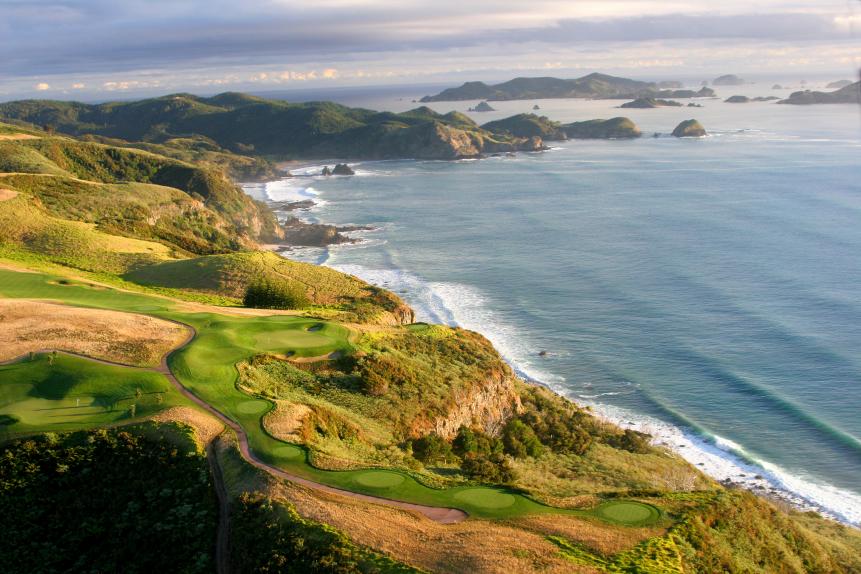 Gary Lisbon Private 55. (26) Kauri Cliffs Matauri Bay, Northland, New Zealand
Gary Lisbon Private 55. (26) Kauri Cliffs Matauri Bay, Northland, New Zealand
- World’s 100 Greatest
Like Cape Kidnappers 400 miles to the southeast, Kauri Cliffs occupies an old sheep ranch atop an ocean-front plateau laced with canyons. Unlike Kidnappers, the 2000 layout by design-and-build architect Dave Harman of Orlando has hills of native rough, stands of fern and more forced carries over gorges. The topography allowed Harman to string the seventh and eighth and 14th through 17th holes parallel to the edge of the Pacific, although several hundred feet above it. Sadly, Harman died in 2004 of tongue cancer. Kauri Cliffs was his finest achievement. View Course 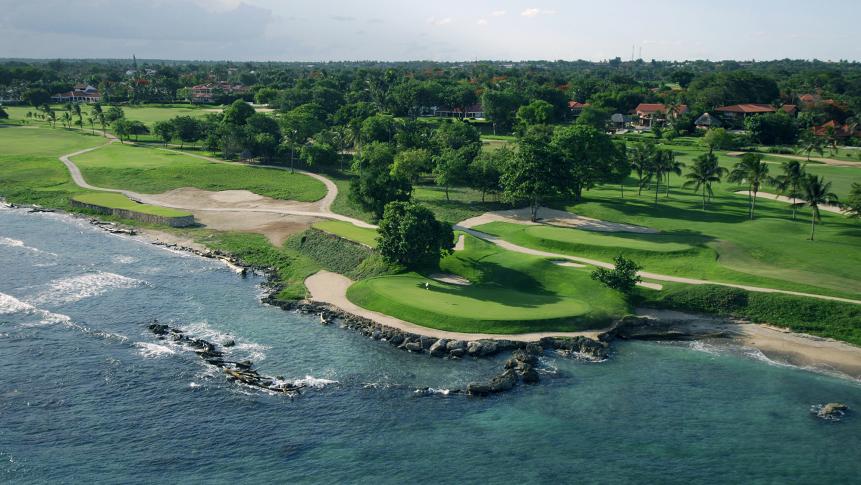 Tony Arruza/Courtesy of Casa de Campo/The Leading Hotels of the World 54. (20) Casa de Campo (Teeth of the Dog) La Romana, Dominican Republic
Tony Arruza/Courtesy of Casa de Campo/The Leading Hotels of the World 54. (20) Casa de Campo (Teeth of the Dog) La Romana, Dominican Republic
- World’s 100 Greatest
The Teeth of the Dog turned the Dominican Republic into a golf destination in 1971. Pete Dye rebuilt and updated the course several times, sometimes after hurricane damage and sometimes to fine tune the design. The routing is stunning, a clockwise front nine, counterclockwise back nine, with seven holes hunkered down on the ocean, no more than 20 feet above the surf. The sea is on the left on holes five through eight, on the right on holes 15 through 17. Every hole is unique and scenic. Former PGA Tour player Jerry Pate is overseeing comprehensive course upgrades beginning in 2024. View Course 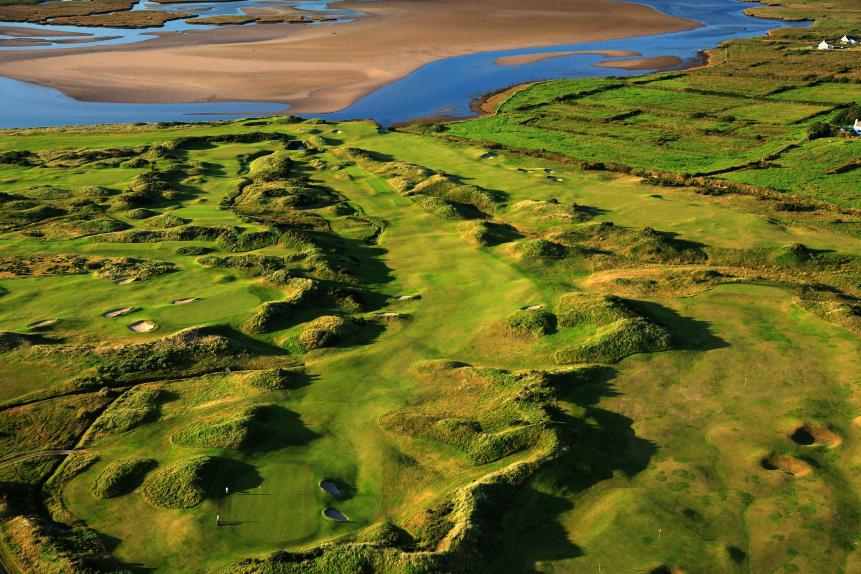 Courtesy of the club Private 53. (60) Waterville Golf Links Waterville, County Kerry, Ireland
Courtesy of the club Private 53. (60) Waterville Golf Links Waterville, County Kerry, Ireland
- World’s 100 Greatest
Waterville has some superb dunes holes, next to the Ballinskelligs Bay, and several laid out in former potato fields. Original owner John Mulcahy and 1947 Masters champion Claude Harmon (Butch’s dad) collaborated with Irish golf architect Eddie Hackett on the early 1970s design. A decade ago, Tom Fazio added new par-3 sixth and par-4 seventh holes and altered 13 others, adding new tees, greens and much-needed humps and bumps to the flattish front nine. The collection of par 3s is as strong as any in Ireland, highlighted by the “Mass” hole across a deep basin to a naked green and the 17th, “Mulcahy’s Peak,” playing toward a horizon along the bay. View Course  Courtesy of the club 52. (64) Machrihanish Golf Club Machrihanish, Scotland
Courtesy of the club 52. (64) Machrihanish Golf Club Machrihanish, Scotland
- World’s 100 Greatest
To reach Machrihanish, Old Tom Morris needed a train, a steamboat and a long carriage ride. Visitors today have to resort to much the same mode, so remote is Machrihanish, on the southern end of Scotland’s Kintyre Peninsula. It’s a journey rewarded, from one of the game’s greatest opening tee shots, which the bold will carry over a beach and Atlantic tide on the left, to the remainder of the links in some of the most rugged dunes known to links golf. View Course  Photo by Stephen Szurlej 51. (72) Castle Stuart Golf Links Inverness, Scotland
Photo by Stephen Szurlej 51. (72) Castle Stuart Golf Links Inverness, Scotland
- World’s 100 Greatest
Once he completed Kingsbarns (No. 22), owner Mark Parsinen found another ideal venue farther north on the shores of the Moray Firth. Golf architect Gil Hanse and partner Jim Wagner hand-built Castle Stuart, with Parsinen, who passed away in 2019, involved in every step of the design. Each nine opens with holes framed by shore’s edge on one side and a high bluff on the other. Then each nine moves to a mezzanine level where the views are spectacular and several “infinity greens” seem perched on cliffs directly over the sea. Castle Stuart, now part of the Cabot Highlands property, soon to be joined by a Tom Doak-designed course, has hosted several Scottish Opens. Parsinen’s dream was to host The Open. View Course 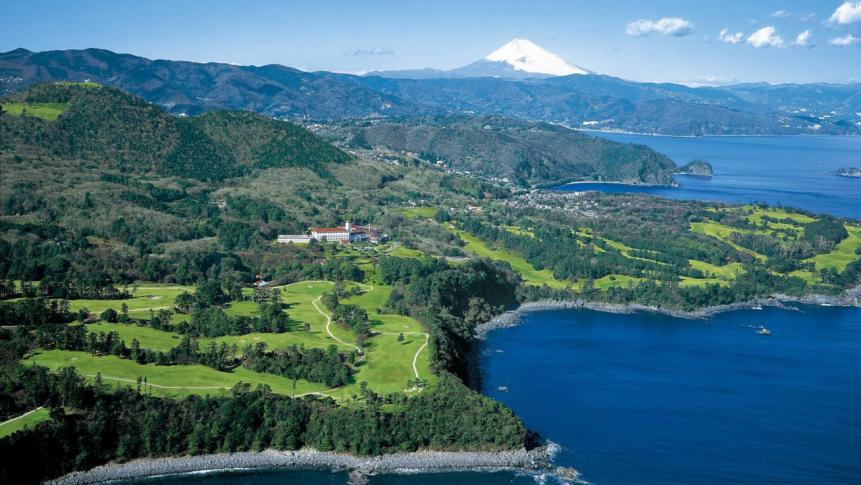 Courtesy of Kawana Hotel 50. (42) Kawana Golf Resort (Fuji) Ito, Shizuoka, Japan
Courtesy of Kawana Hotel 50. (42) Kawana Golf Resort (Fuji) Ito, Shizuoka, Japan
- World’s 100 Greatest
C.H. Alison’s 1936 design for Japan’s first golf resort has long been dubbed the “Pebble Beach of Japan,” but the layout is far more mountainous. That’s evident from the opening hole, which drops down a tumbling fairway framed by twisted pines to a green with Sagami Bay as its backdrop. The sea also backdrops the steep downhill fourth, seventh, 10th, 11th, 14th and 15th holes. Unlike at No. 26 Hirono, Alison’s bunkering here is subdued. View Course More from Golf Digest 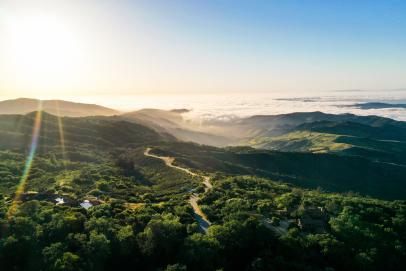 Golf Digest Logo Golf’s 10 best entrances, ranked
Golf Digest Logo Golf’s 10 best entrances, ranked 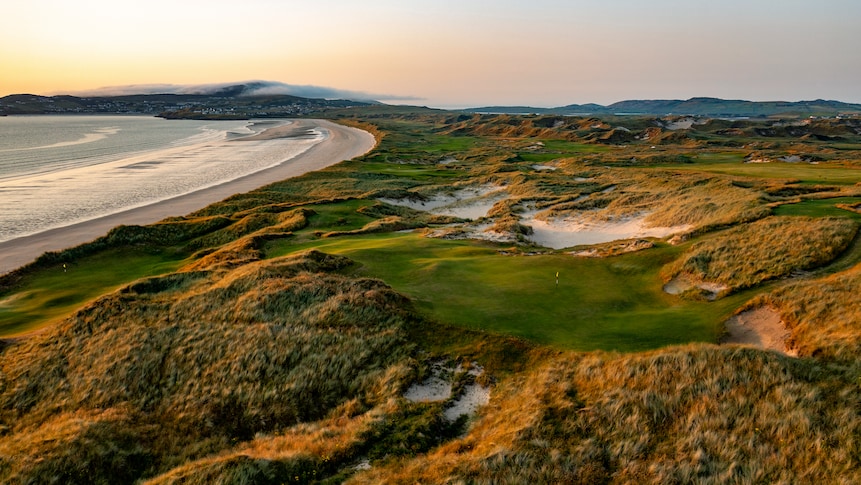 Clyde Johnson 49. (NR) St. Patrick’s Links Downings, Co. Donegal, Ireland
Clyde Johnson 49. (NR) St. Patrick’s Links Downings, Co. Donegal, Ireland
- World’s 100 Greatest
It’s always been known that the dunes to the south of the original Rosapenna resort on Ireland’s northwest coast in County Donegal were some of the country’s most profound linksland, though the two original courses that had occupied them since the 1990s with slender, simple fairways running mostly in parallel directions never fulfilled that promise. It wasn’t until Tom Doak began reworking the land in 2019—eliminating most of the holes, maintaining the corridors of others and finding new territories of dunes and sand ridges to explore within the site’s 300 acres along Sheephaven Bay—that the land’s true potential was realized. Opened in 2021, the routing of each nine moves out through buffered channels toward the shore, utilizing broad, bouncy fairways that camber into greens that are either set in hollows or elevated on wind-battered bluffs. In buoyancy, variety and seaside topography, St. Patrick’s rivals the best of what Irish golf has to offer. View Course 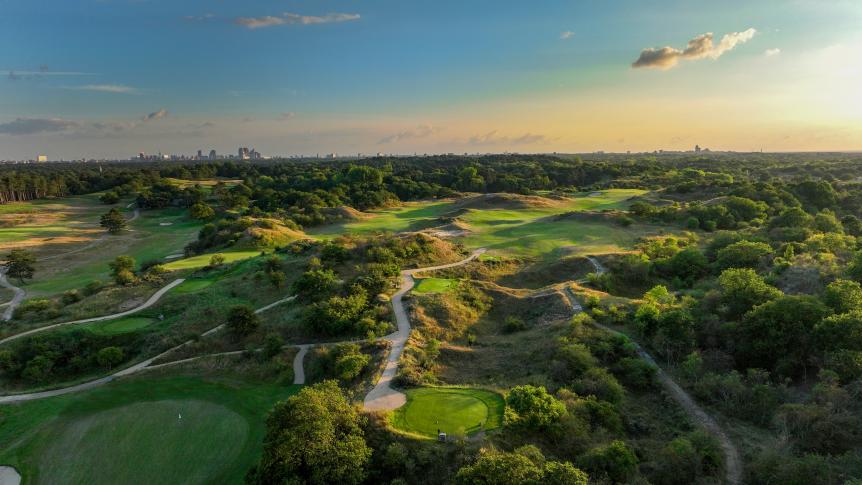 Gary Lisbon Private 48. Koninklijke Haagsche (Royal Hague) Wassenaar, South Holland, Netherlands
Gary Lisbon Private 48. Koninklijke Haagsche (Royal Hague) Wassenaar, South Holland, Netherlands
- World’s 100 Greatest
Though located inland from the sea, there’s no question Royal Hague is links golf. The course, north of the city, sits on the edge of a vast region of sand dunes that would be the home to several more world-class courses if it had been developed in the 19th century (as the links of Scotland had) and not environmentally protected. The Charles Alison and H.S. Colt design is a lesson in restraint—following Frank Pont’s restorative efforts over the last decade and a half, there are only 23 bunkers and almost none guarding fairways—five holes have zero bunkers. Royal Hague doesn’t need them with fairways that caterpillar over electric landforms leaving numerous shots uphill to semi-blind greens that seem like the only calm parts of the property View Course 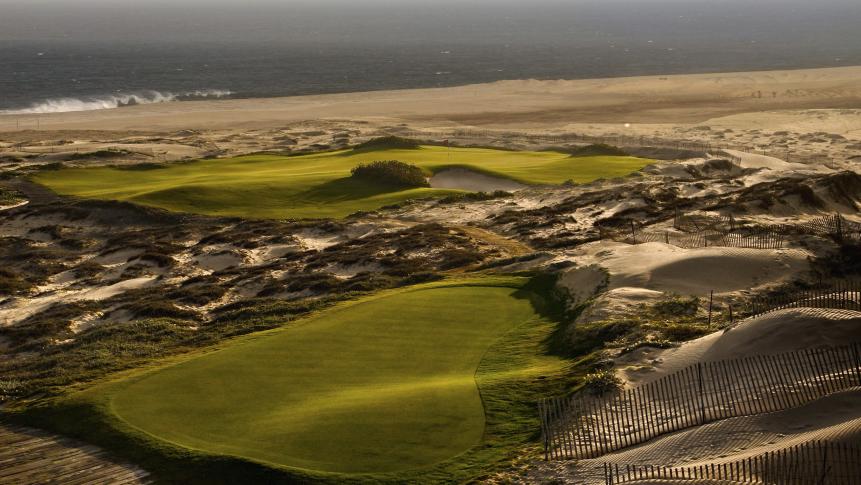 Photo by Angus Murray /Sports Illustrated/Getty Images Private 47. (50) Diamante Golf Club (Dunes) Cabo San Lucas, Baja Sur, Mexico
Photo by Angus Murray /Sports Illustrated/Getty Images Private 47. (50) Diamante Golf Club (Dunes) Cabo San Lucas, Baja Sur, Mexico
- World’s 100 Greatest
Mexico’s first true links, fashioned by Davis Love III and his design team (which included his brother Mark Love and designer Paul Cowley) from a fantastic set of white sand dunes along the Pacific Ocean, huge portions of which are without vegetation and seem like enormous snow drifts. Holes hug the flowing terrain with little artificiality. Two holes on the back nine once played past around a long lagoon, but have been replaced by new 12th and 13th holes on the beach. Now all of the second nine is adjacent to the ocean, amidst the tallest dunes. No other links in the world sports cactus. View Course 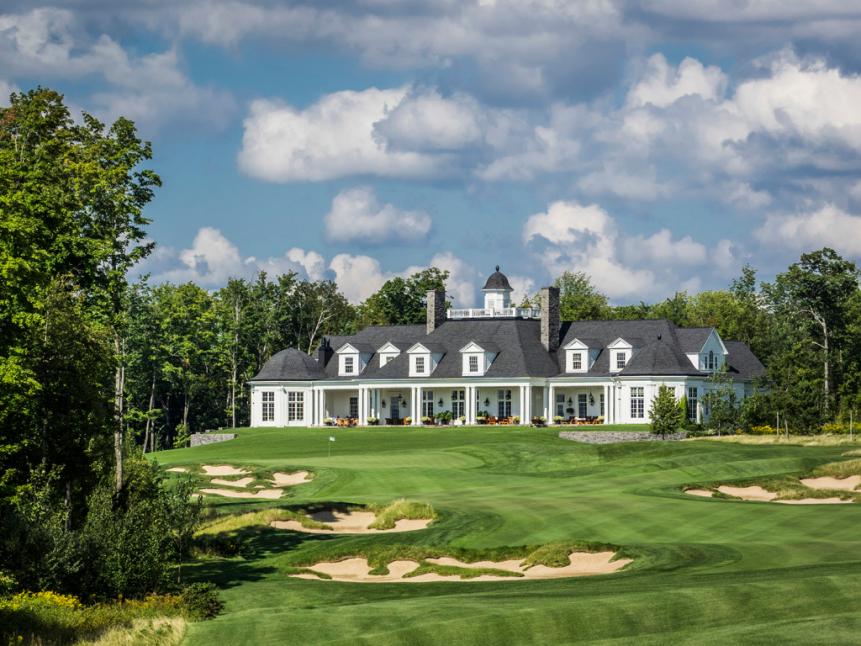 Courtesy of the club Private 46. (83) Memphrémagog Golf Club Magog, Quebec, Canada
Courtesy of the club Private 46. (83) Memphrémagog Golf Club Magog, Quebec, Canada
- World’s 100 Greatest
Memphrémagog in southern Quebec, an hour east of Montreal, is perhaps the toughest ticket in Canadian golf. The ultra-exclusive club is believed to have around just 50 ultrawealthy members and outside play is extremely rare. It’s a shame more golfers don’t get a taste of it—Magog, as it’s known, is a big, lovely course with holes carved into the slopes of the Green Mountains above a lake of the same name. Tom McBroom’s architectural artistry is on full display with high, panoramic tee shots, holes that get down in the lows close to streams and ponds, and intricately shaped bunkering offset by southern Quebec’s lush green hues. But ultimately, it’s the difficult, enormously contoured putting surfaces that leave the biggest impression. View Course 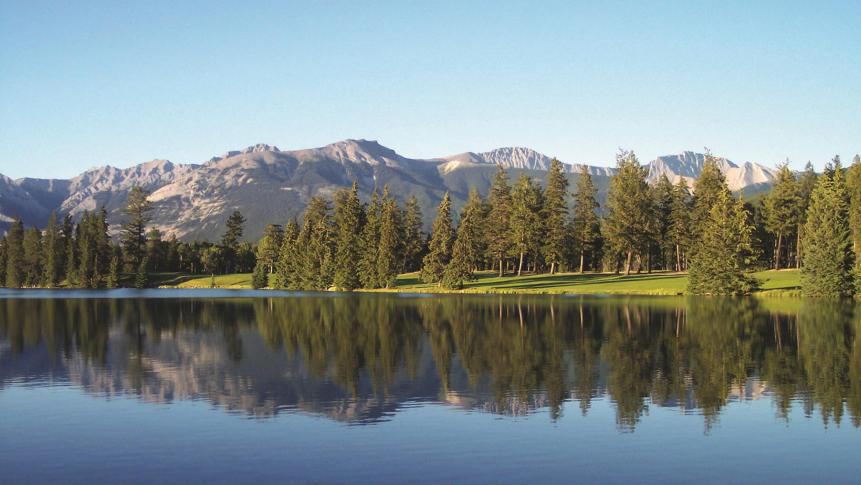 Courtesy of Fairmont Hotels & Resorts 45. (75) Jasper Park Lodge Golf Club Jasper, Alberta, Canada
Courtesy of Fairmont Hotels & Resorts 45. (75) Jasper Park Lodge Golf Club Jasper, Alberta, Canada
- World’s 100 Greatest
Jasper Park actually lies farther north than Stanley Thompson’s other Alberta masterpiece, No. 60 Banff Springs, and is a perfect complement to it. The routing has holes lined up with every prominent mountain peak in the distance. Thompson’s typical sprawling bunkers are everywhere, some staggered diagonally across lines of play, others on the margins of a hole, poking out from beneath tree lines. Built in 1925 by the hand labor of some 200 men, holes are carved through fir, aspen and silver birch trees, and rocks were piled and covered with earth to create greens like the one on the short par-3 15th, a shot so precarious it’s like hitting to the back of a slumbering sea lion. View Course 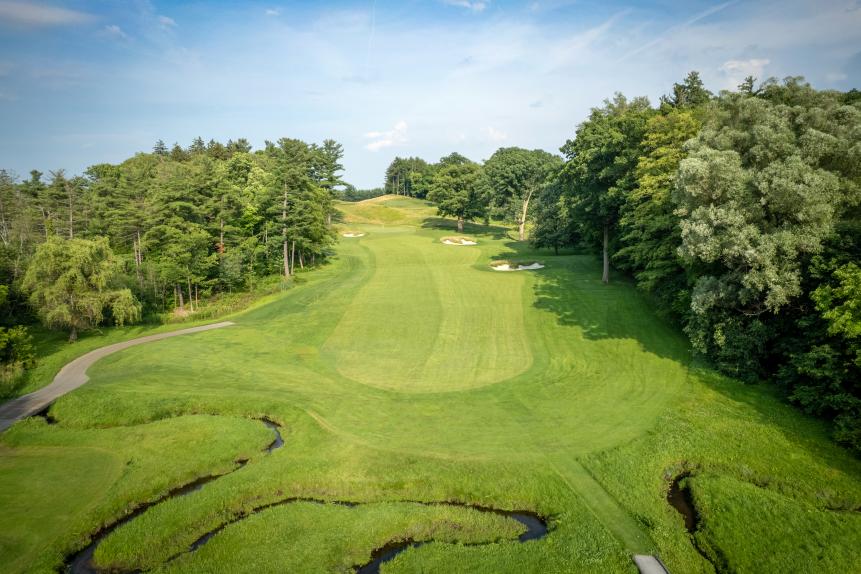 Courtesy of the club Private 44. (52) Hamilton Golf & Country Club (West/South) Ancaster, Ontario, Canada
Courtesy of the club Private 44. (52) Hamilton Golf & Country Club (West/South) Ancaster, Ontario, Canada
- World’s 100 Greatest
A fascinating H.S. Colt layout, with holes routed in clusters of triangles, traversing the hilly landscape both face-on and diagonally, with meandering creeks winding across fairway landing areas. Tom Clark, who spent 20-plus years as consulting architect, rebuilt greens and did work to further emphasize the land contours. More recently, Englishman Martin Ebert was brought in to re-establish Colt’s design philosophy from original drawings, though he had to monitor the shaping work via remote technology due to COVID-19 travel restrictions. Hamilton has hosted the Canadian Open seven times, including five since 2003, most recently the 2024 event won by Scot Robert MacIntyre. View Course 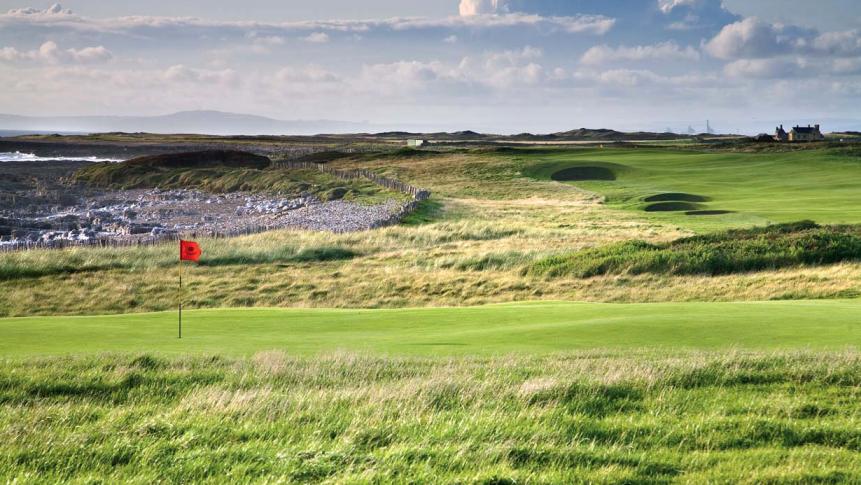 Courtesy of the club Private 43. (45) Royal Porthcawl Golf Club Porthcawl, Wales
Courtesy of the club Private 43. (45) Royal Porthcawl Golf Club Porthcawl, Wales
- World’s 100 Greatest
Considered a seaside venue but not a true links, Royal Porthcawl, situated on the south coast of Wales, doesn’t have returning nines, but it’s not an out-and-back routing either. Instead, the front nine moves in a clockwise crescent-shaped manner, with the back nine running counterclockwise inside the crescent. Only the first three holes play adjacent to Bristol Channel, but there are ocean views and ocean winds on all the inland holes too, which are on higher ground. The 2017 Senior Open was contested at Royal Porthcawl, with Bernhard Langer winning a record 10th senior major, and Alex Cejka won the 2023 Senior Open here. View Course 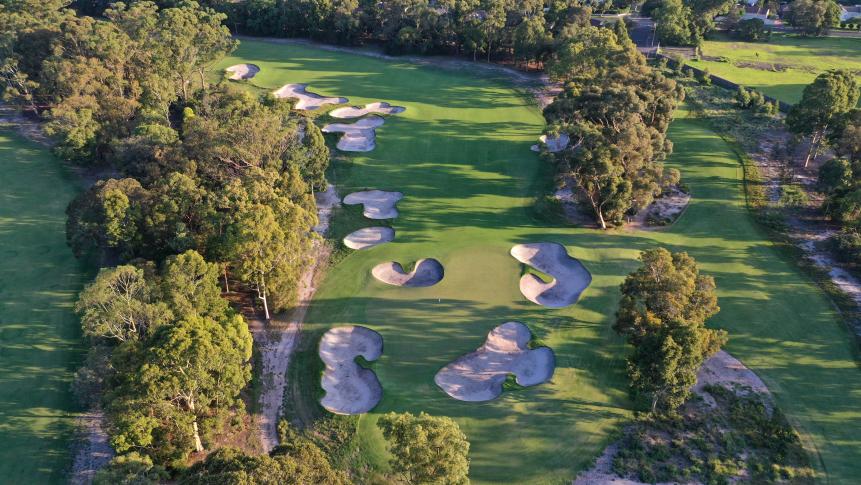 Gary Lisbon Private 42. (58) The Metropolitan Golf Club Oakleigh South, Victoria, Australia
Gary Lisbon Private 42. (58) The Metropolitan Golf Club Oakleigh South, Victoria, Australia
- World’s 100 Greatest
Metropolitan was designed by club members J.B. Mackenzie and C.W. Chapman in 1908 and was revised in 1926 by famed architect Alister MacKenzie, as part of his two-month visit to Australia. But the present design is the work of American architect Dick Wilson, who added eight new holes in the late 1950s. Wilson also revised the remaining holes to reflect his philosophy that golf is meant to be played through the air. Bunkers front nearly every green and pinch nearly every fairway. Metropolitan hosted the PGA Tour’s World Cup of Golf in 2018. View Course 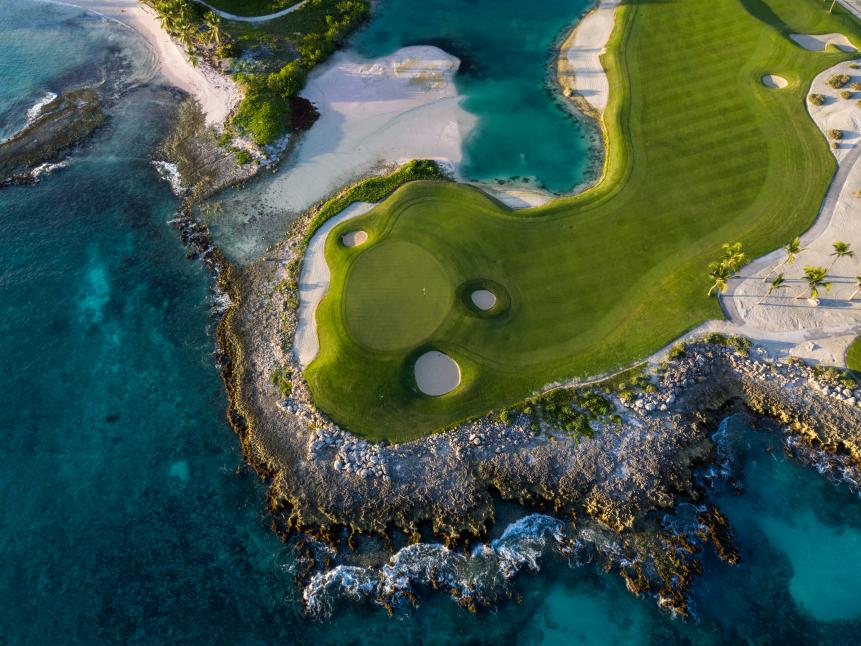 Evan Schiller 41. (49) Punta Espada Golf Club Punta Cana, Dominican Republic
Evan Schiller 41. (49) Punta Espada Golf Club Punta Cana, Dominican Republic
- World’s 100 Greatest
Jack Nicklaus got his start in golf design working with Pete Dye, and his Punta Espada is a lively version of Dye’s 1971 design of the Teeth of the Dog course (No. 54) farther down the Dominican coast, from the pot bunkers to the broad waste areas of brilliant white sand usually associated with Pete’s work, as well as the low-profile greens and the eight green complexes right on the Caribbean shore. Punta Espada starts and finishes on the Caribbean and returns to it early in the back nine, with the awesome 249-yard, par-3 13th directly over an ocean cove. View Course 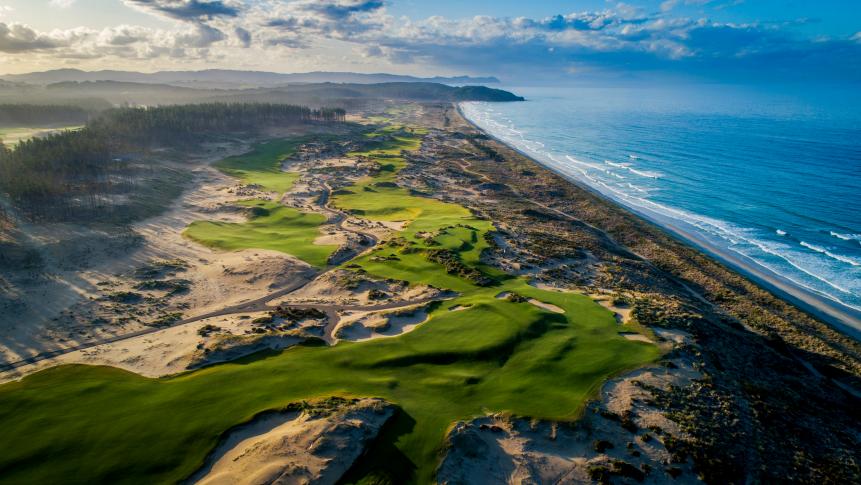 Nick Wall Private 40. (NR) Te Arai Links (South) Tomarata, Auckland, New Zealand
Nick Wall Private 40. (NR) Te Arai Links (South) Tomarata, Auckland, New Zealand
- World’s 100 Greatest
The courses at Te Arai are cousins of Tara Iti, a private course that jumped to No. 2 in the ranking shortly after it opened in 2015 (it’s currently seventh). The two public resort courses are situated roughly five miles to the south along the same long stretch of Pacific beach, where Bill Coore’s figure-eight routing of the spellbinding South Course begins in a forest behind a wall of inland sand dunes before exploding onto the oceanfront headlands stringing parts or all of 10 tumbling, rambling holes along the sea. View Course 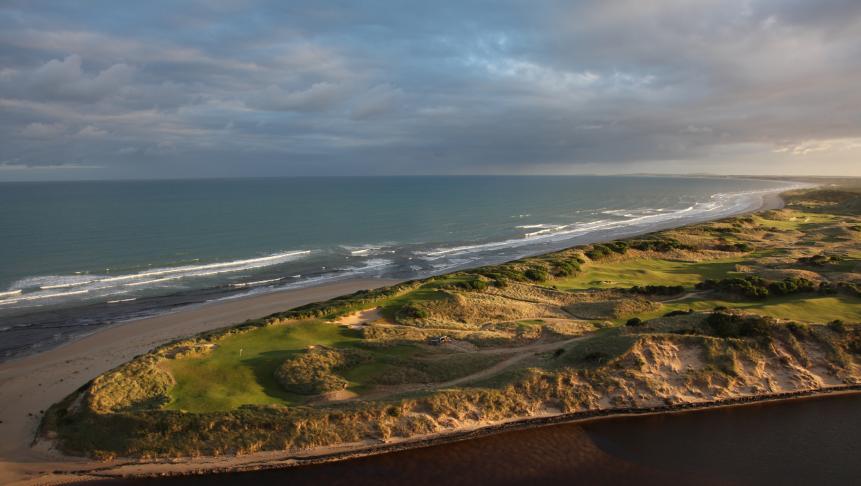 Photo by Stephen Szurlej 39. (37) Barnbougle Lost Farm Bridport, Tasmania, Australia
Photo by Stephen Szurlej 39. (37) Barnbougle Lost Farm Bridport, Tasmania, Australia
- World’s 100 Greatest
On a site just across the river from sister Barnbougle Dunes (No. 16), with taller dunes but fewer of them, Lost Farm has not 18, but 20 holes, counting its two short pitch-shot bye holes. The design is dramatic and unusual, particularly the par-4 fifth, a dogleg right along the river, whose blind tee shot brings to mind the 17th at St. Andrews. Instead of old black sheds, a high dune blocks view of the fairway from the tee. Billed as a Coore and Crenshaw design, schedule conflicts kept Ben Crenshaw from participating. Bill Coore used the usual C&C construction team, though. View Course  Courtesy of the club Private 38. (32) St. George’s Golf & Country Club Etobicoke, Ontario, Canada
Courtesy of the club Private 38. (32) St. George’s Golf & Country Club Etobicoke, Ontario, Canada
- World’s 100 Greatest
Another outstanding Stanley Thompson design, St. George’s is routed through forest-covered glacial land, with meandering fairways that diagonally traverse valleys to greens perched on domes. The putting surfaces are tightly bunkered and full of hidden undulations. These are considered some of Thompson’s best bunkering, thanks in part to American architect Tom Doak and Canadian architect Ian Andrew, who recently collaborated to restore their shapes, highlighting their sweeping lines and graceful movements. St. George’s hosted the Canadian Open six times, including the 2022 event won flamboyantly by Rory McIlroy. View Course 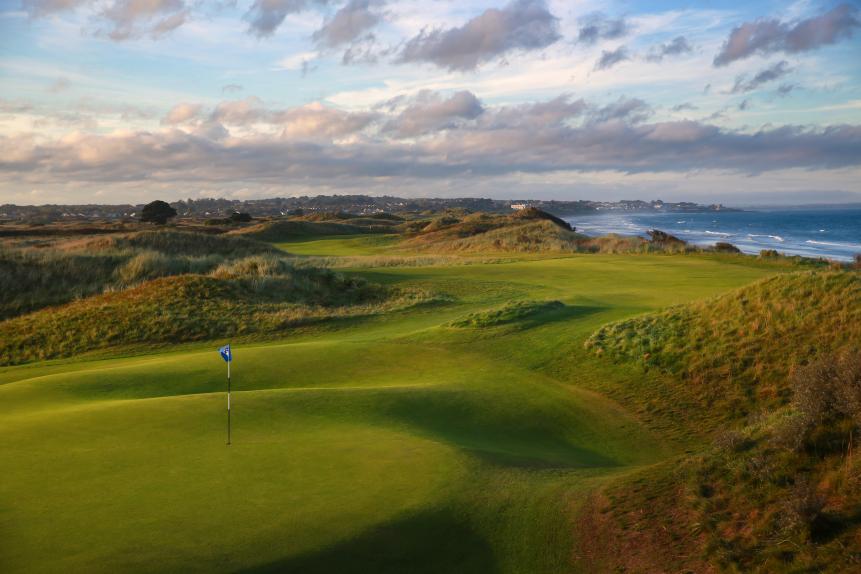 Kevin Murray Private 37. (T-62) Portmarnock Golf Club (Championship) Portmarnock, County Dublin, Ireland
Kevin Murray Private 37. (T-62) Portmarnock Golf Club (Championship) Portmarnock, County Dublin, Ireland
- World’s 100 Greatest
A true links on rolling ground with soft rather than dramatic dunes, Portmarnock, on a spit of land in the Irish Sea north of Dublin, is known for its routing, which hasn’t been altered in over a hundred years and was revolutionary at the time for constantly changing wind direction with every shot. The links is also known for its fairness, as nearly every feature is plainly in view from tee to green, which makes its maze of bunkers and subtle greens all the more testing. View Course 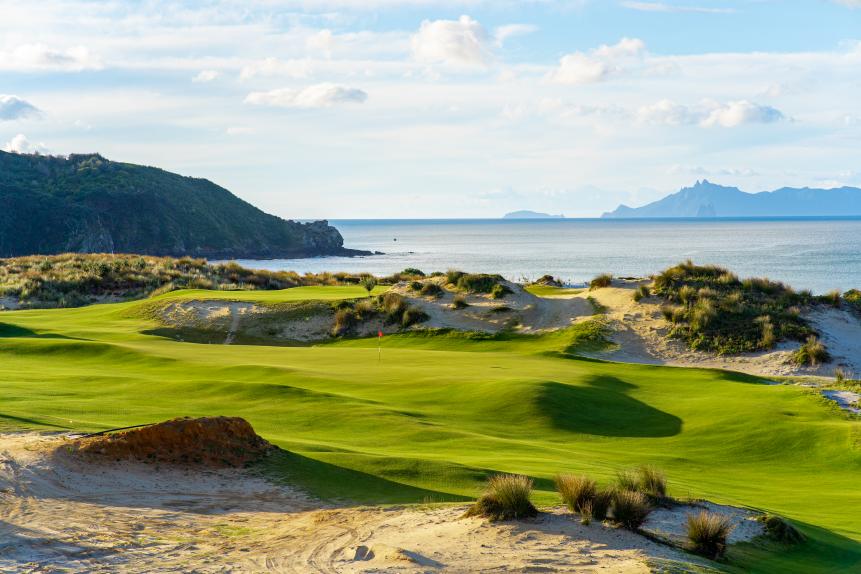 Ricky Robinson Private 36. (NR) Te Arai Links (North Course) Tomarata, Auckland, New Zealand
Ricky Robinson Private 36. (NR) Te Arai Links (North Course) Tomarata, Auckland, New Zealand
- World’s 100 Greatest
Tom Doak’s North Course at this new resort development on the northeast course of New Zealand is the highest-ranked debut in 2024. Unlike the South Course, which opened a year earlier, only a few holes play near the Pacific Ocean. The North doesn’t need them. Doak’s routing begins and ends on the ocean, but the spirit of the design resides in the majority of holes that play inland through sand barrens and a forest of conifers. As expected from Doak, the greens are full of robust movements and there are few level stances anywhere that’s not a tee. View Course 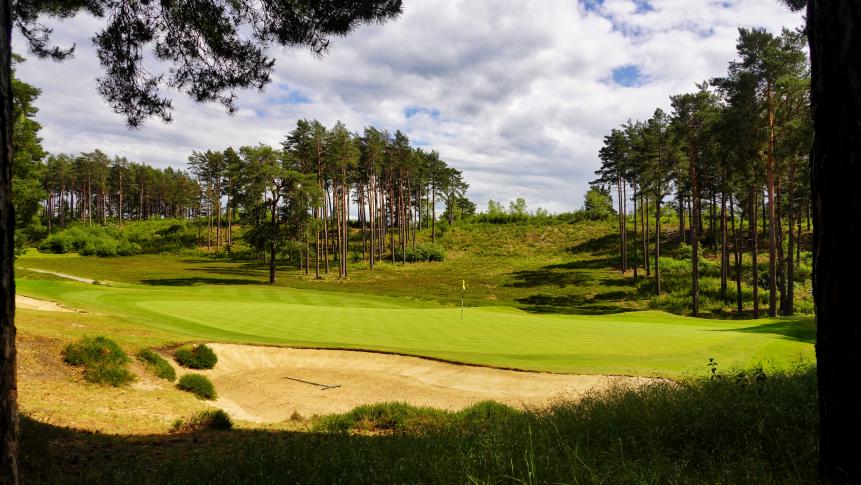 Jon Cavalier/@LinksGems Private 35. (43) Sunningdale Golf Club (New) Sunningdale, Berkshire, England
Jon Cavalier/@LinksGems Private 35. (43) Sunningdale Golf Club (New) Sunningdale, Berkshire, England
- World’s 100 Greatest
H.S. Colt, who was the club’s secretary from 1901 to 1913, laid out the New Course in 1923, well after he’d established his reputation as a grand golf architect. It’s considered by most to be tougher than No. 15 Sunningdale Old, mainly because Colt’s greens are smaller, with subtle contours that nudge balls toward bunkers hard along the collars. It’s a toss-up as to which course is prettier. Both have fields of heather, gorse, Scotch broom and clusters of pine, oak and silver birch. View Course  Dom Furore Private 34. (T-67) Trump International Golf Links Aberdeen, Scotland
Dom Furore Private 34. (T-67) Trump International Golf Links Aberdeen, Scotland
- World’s 100 Greatest
The biggest mover in this year’s ranking, this Martin Hawtree design is set in sand dunes that are as dramatic as there is in golf, better than those at No. 19 Royal Birkdale and No. 20 Royal St. George’s. Some dunes reach 100 feet above fairways. All are covered in deep marram grasses. Fairways pitch and tumble, often posing downhill lies to uphill targets. Every bunker is at least knee deep, encircled with stacked-sod faces. Greens are perched and edged by deep hollows. It’s a setting as grand as it gets, though some critics label it the most “American” of any links in the ranking for the elevated tees and “framing” of the greens and fairways. View Course 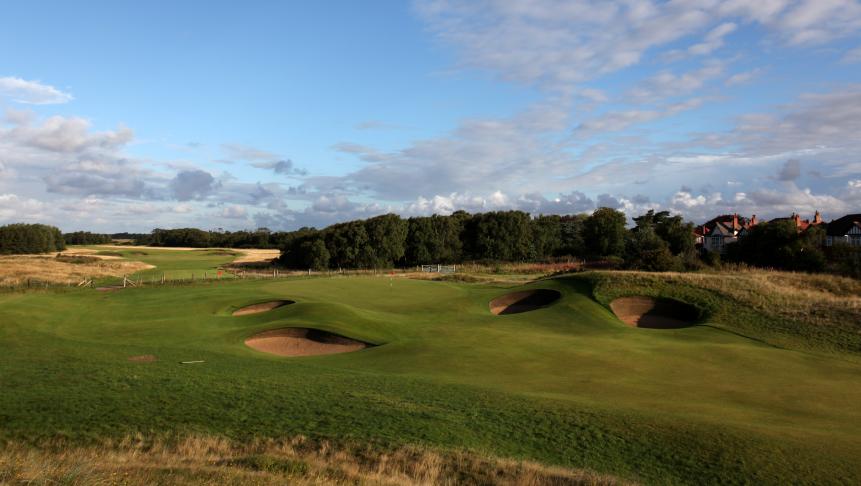 Courtesy of the club Private 33. (48) Royal Lytham & St. Annes Golf Club Lytham St Annes, Lancashire, England
Courtesy of the club Private 33. (48) Royal Lytham & St. Annes Golf Club Lytham St Annes, Lancashire, England
- World’s 100 Greatest
Perhaps the least dramatic-looking links in The Open rota, mainly because it’s surrounded by houses and a rail line, with the seacoast hundreds of yards distant and never in sight. Lytham boasts more than 200 bunkers, most built a century ago, when the club was heralded as a pioneer of natural bunkering. Its par-3 first hole is unusual, while its finish, six straight par 4s, is a terrific challenge that was, in 2011, the downfall of Adam Scott and a triumph for Ernie Els. The club boasts one of the great rosters of champions including Bobby Jones, Bobby Locke, Peter Thomson, Gary Player and Seve Ballesteros (twice). View Course 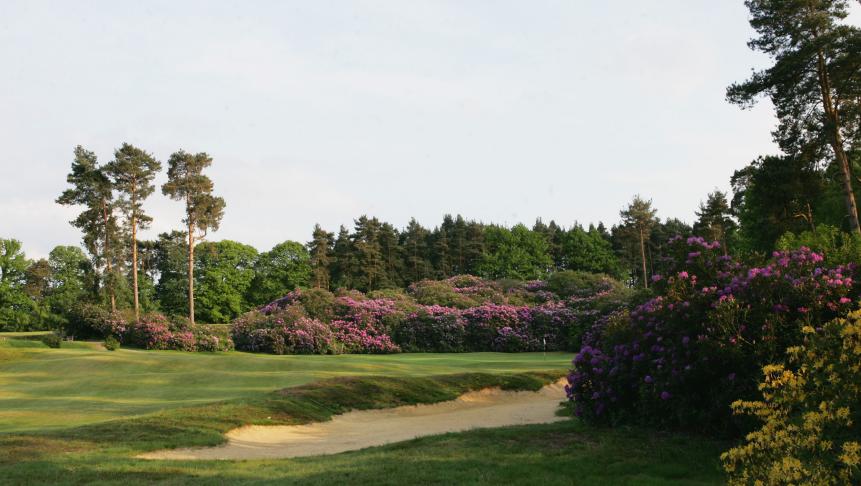 David Alexander/Getty Images Private 32. (25) Swinley Forest Golf Club Ascot, Berkshire, England
David Alexander/Getty Images Private 32. (25) Swinley Forest Golf Club Ascot, Berkshire, England
- World’s 100 Greatest
Due west of Sunningdale in London’s heathland is Swinley Forest, which H.S. Colt described as the “least bad course” he ever designed. Much of its reputation is built around its five par 3s, each with its own personality and challenge. Colt supposedly located them first, then built around them, using an ideal balance of short and long par 4s on each nine. The par 3s are indeed outstanding; the 17th looks like it might have been the role model for A.W. Tillinghast’s 10th at Winged Foot’s West course. View Course 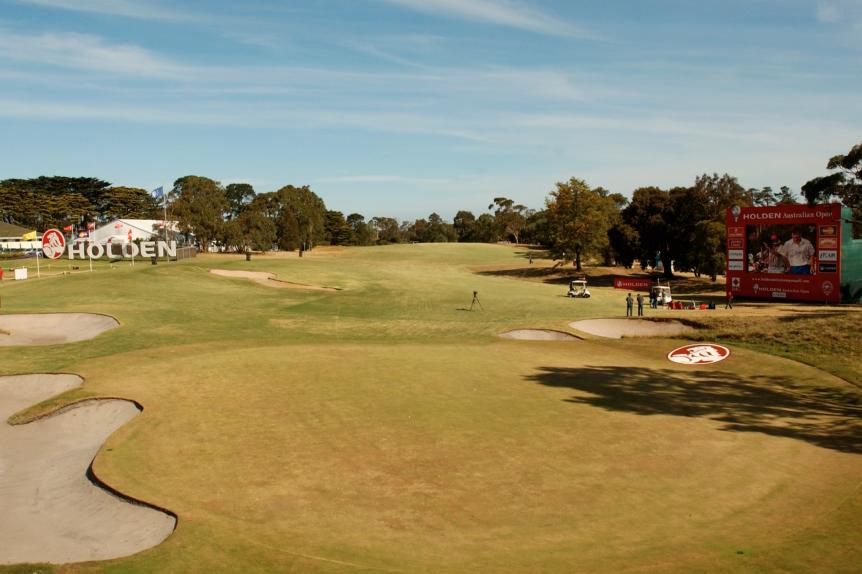 Private 31. (57) Victoria Golf Club Cheltenham, Victoria, Australia
Private 31. (57) Victoria Golf Club Cheltenham, Victoria, Australia
- World’s 100 Greatest
Located kitty-corner across a road from Royal Melbourne, Victoria Golf Club is the home course of professional tour stars Peter Thomson (who passed away in 2018) and Geoff Ogilvy, now of the architectural firm Ogilvy, Cocking & Mead. It was designed originally by a couple of club founders. Alister MacKenzie made bunkering suggestions during a 1926 visit, changes later implemented by Alex Russell. Victoria has smaller greens than at other prominent Melbourne courses, and the bunkers hard against the collars make them play even tighter. Once heavily forested, consulting architect Michael Clayton has been slowly removing many trees. View Course More from Golf Digest 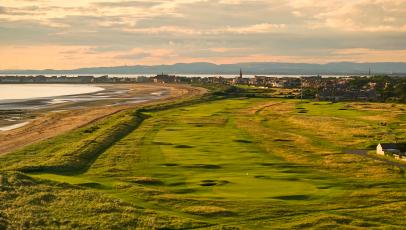 Golf Digest Logo British Open 2024: The 5 holes that will decide who wins at Royal Troon
Golf Digest Logo British Open 2024: The 5 holes that will decide who wins at Royal Troon 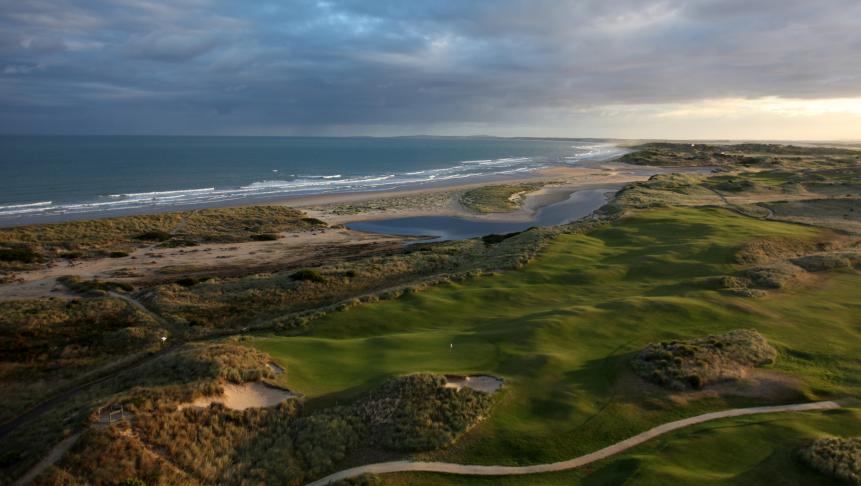 Photo by Stephen Szurlej Public 30. (16) Barnbougle Dunes Bridport, Tasmania, Australia
Photo by Stephen Szurlej Public 30. (16) Barnbougle Dunes Bridport, Tasmania, Australia
- World’s 100 Greatest
A 2004 collaboration of American designer Tom Doak and Australian tour-pro-turned-architect Michael Clayton, Barnbougle Dunes is a tremendous 18 in a fantastic stretch of sand dunes along Bass Strait, the sea that separates Tasmania from Melbourne. What’s most fascinating is that the back nine is completely reversed from how Doak originally routed it. So was the site so good that, once construction started, Doak and Clayton were able to find nine new green sites at the opposite ends of holes originally envisioned? Or did they create those “natural” green sites? View Course 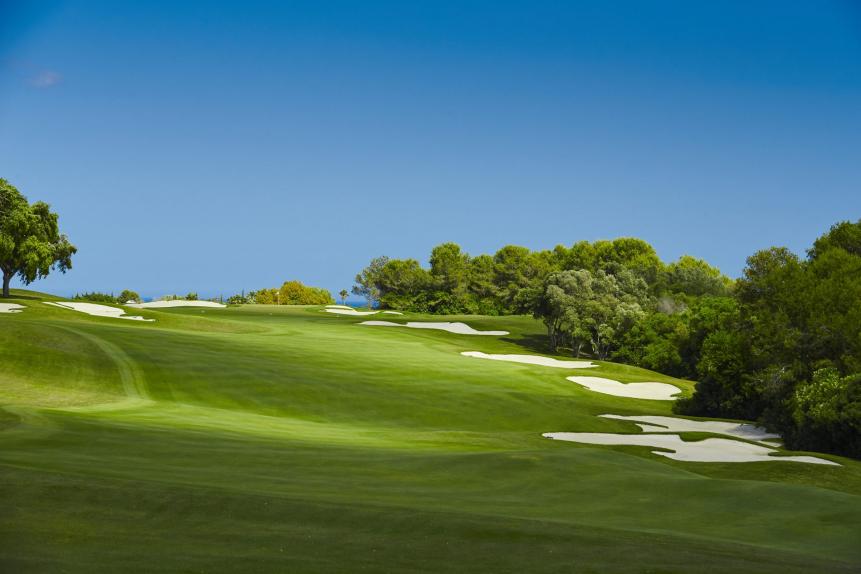 Courtesy of Valderrama Private 29. (29) Real Club Valderrama Sotogrande, Cádiz, Spain
Courtesy of Valderrama Private 29. (29) Real Club Valderrama Sotogrande, Cádiz, Spain
- World’s 100 Greatest
Best known as the site of the 1997 Ryder Cup, won by Europe in a squeaker, Valderrama was a favorite design of the late architect Robert Trent Jones. His tight, twisting fairways, pinched at every turn by squat olive trees, led to surprisingly small putting surfaces protected by his trademark splashy bunkers. Valderrama contains one of the more controversial holes in golf: The par-5 17th guarded by water in front, which European captain Seve Ballesteros toughened for that Ryder Cup. It influenced the outcome then, and was a game changer again in 2017, when Sergio Garcia won his own foundation’s tournament, the European Tour’s Andalucia Valderrama Classic. His birdie on 17 in the final round was the margin of victory. View Course  David Cannon/R&A Private 28. (53) Royal Troon Golf Club (Old) Troon, Scotland
David Cannon/R&A Private 28. (53) Royal Troon Golf Club (Old) Troon, Scotland
- World’s 100 Greatest
Looks are deceiving at Royal Troon. It looks straightforward, almost docile, until the wind blows. Then, if it’s downwind out to the ninth hole, as it usually is, the homeward nine becomes a long march into a stiff breeze, if not an ocean gale. Troon dates from 1878 and was given its Royal title 100 years later. Few know its famed 123-yard 8th, the Postage Stamp, the shortest in British Open golf, was originally a blind par 3—the present green wasn’t built until 1910. In 2016, Royal Troon was the site of one of the most dramatic duels in Open history, with Henrik Stenson prevailing over Phil Mickelson to win his first major title. Royal Troon hosts its tenth Open Championship in 2024. View Course 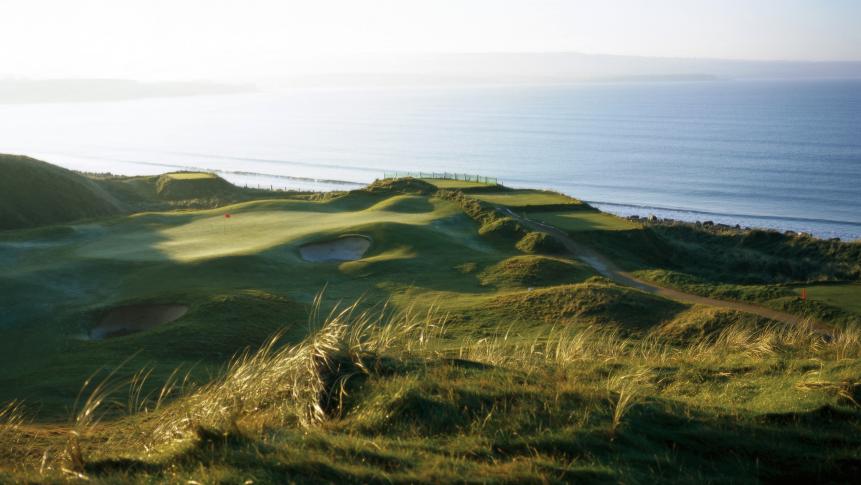 Photo by Stephen Szurlej Private 27. (41) Lahinch Golf Club (Old) Lahinch, Co. Clare, Ireland
Photo by Stephen Szurlej Private 27. (41) Lahinch Golf Club (Old) Lahinch, Co. Clare, Ireland
- World’s 100 Greatest
Considered by some to be the St. Andrews of Ireland, the splendid links at Lahinch reflects evolution in golf architecture. After Alister MacKenzie remodeled it in the 1920s, only a few of Old Tom Morris’ original holes, like the Klondyke par-5 fourth, and Dell par-3 fifth, both with hidden greens, remained. In the 1980s, Donald Steel altered some of MacKenzie’s holes and in the 2000s Martin Hawtree rebuilt everything and added four new holes. One classic MacKenzie par 3, the old 13th, is now a bye hole. View Course 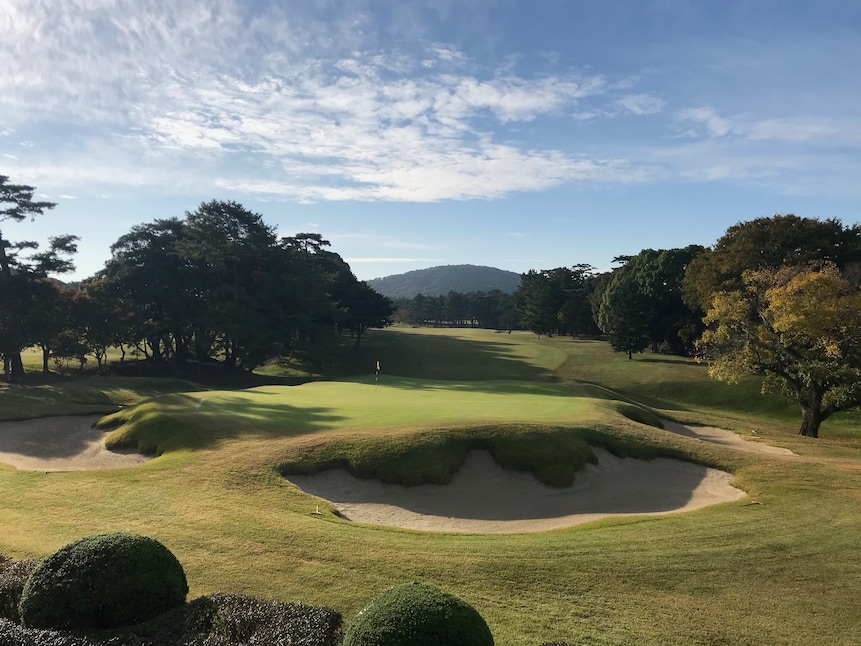 Michael Wolf/@BamaBearcat Private 26. (6) Hirono Golf Club Miki, Hyogo, Japan
Michael Wolf/@BamaBearcat Private 26. (6) Hirono Golf Club Miki, Hyogo, Japan
- World’s 100 Greatest
This is undoubtedly the finest design of globetrotting C.H. Alison, longtime partner of H.S. Colt. He laid out Hirono in the early 1930s in a hilly pine forest slashed by gulleys, clearing wide corridors and positioning greens on the crests of ridges. What makes Hirono special was Alison’s spectacular bunkering, which ranged from diagonal cross bunkers, fearsome carry bunkers and strings of ragged-edged ones. Soon after completion, writers were calling Hirono the Pine Valley of Japan. The restorative work by Tom Mackenzie and Martin Ebert has sharpened the teeth of Alison’s bunkering and restored the lost tees of the par-3 13th, making the hole play once again at an angle to the fronting lake rather than directly across it. View Course 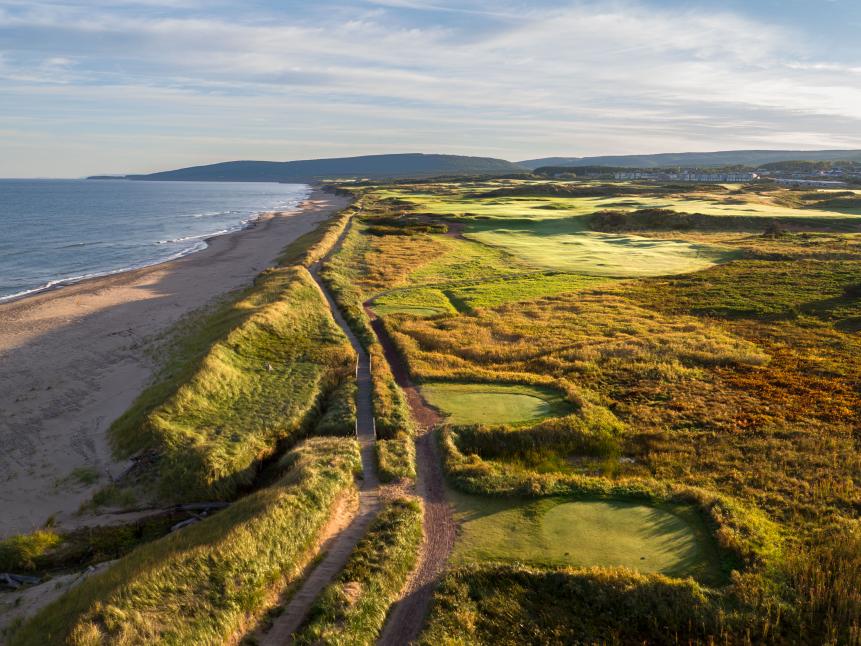 Evan Schiller 25. (39) Cabot Links Inverness, Nova Scotia, Canada
Evan Schiller 25. (39) Cabot Links Inverness, Nova Scotia, Canada
- World’s 100 Greatest
The older sister to No. 13 Cabot Cliffs is not a natural links, though it looks and plays like it. Cabot Links was man-made by designer-shaper Rod Whitman, with help from Dave Axland and Jeff Mingay, on a coastal coal mine staging area that serviced mines beneath the sea. Bump-and-run shots on firm fescue turf is the game on this understated layout, with muted dunes, austere bunkering and gentle, generous greens. Call it Canada’s Portmarnock (ranked 37th), though Ireland has no match for Cabot’s postcard par-4 11th, a dogleg-left around a tidal yacht basin. In early routings, that was going to be the closing hole. View Course 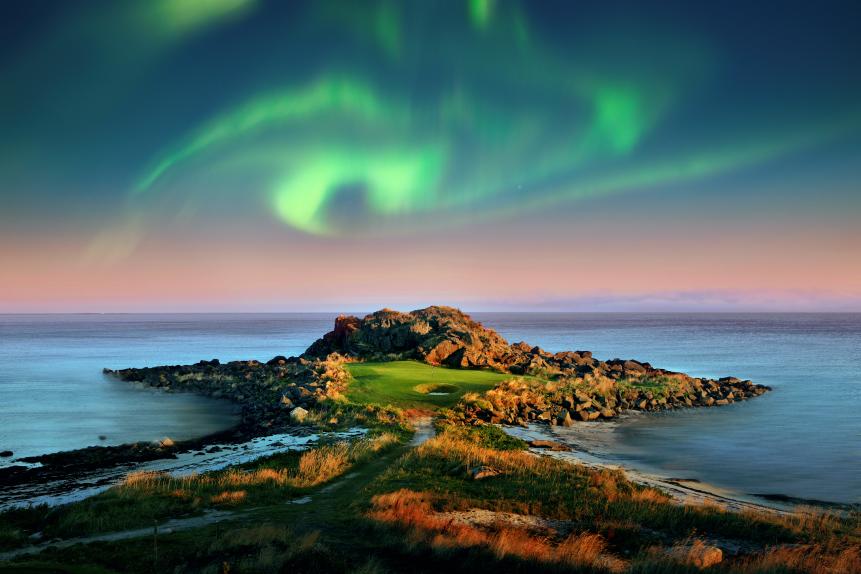 Jacob Sjöman Private 24. (44) Lofoten Links Gimsoysand, Lofoten, Norway
Jacob Sjöman Private 24. (44) Lofoten Links Gimsoysand, Lofoten, Norway
- World’s 100 Greatest
The most remote course in the rankings, Lofoten Links is located, for reference, four degrees latitude north of Iceland on Norway’s Lofoten archipelago that branches deep into the Norwegian Sea. The course is set in an austere but stunning Game of Thrones landscape of rock and ocean, and the bumpy links-like holes are studded with pot bunkers and ramble through fields of stone and cold season native grasses. Lofoten started as a six-hole course in the 1990s and was only expanded to 18 holes in 2015, so it’s a newcomer to global golf travelers, and it’s already jumped 20 places in the rankings since its debut in 2022. View Course 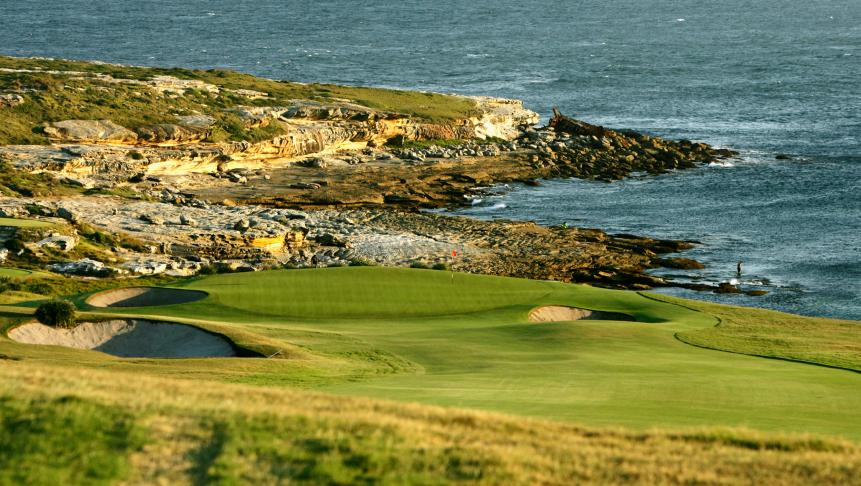 Photo by David Cannon/Getty Images Private 23. (14) New South Wales Golf Club La Perouse, New South Wales, Australia
Photo by David Cannon/Getty Images Private 23. (14) New South Wales Golf Club La Perouse, New South Wales, Australia
- World’s 100 Greatest
On the dramatic rugged seacoast of Botany Bay near Sydney, on the spot where Captain Cook first stepped onto Australia in 1770, La Perouse is renowned for its ocean views and high winds. On his brief but productive 1926 trip, Alister MacKenzie prepared a routing for the course, but it was radically altered during a 1936 remodeling by Eric Apperly and by neglect during World War II. A succession of post-war architects has slowly re-established the integrity of the design, most recently Tom Doak. View Course 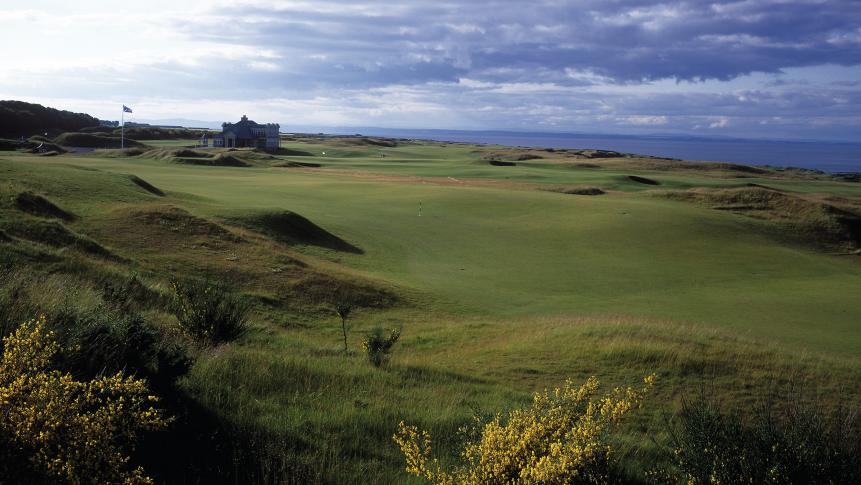 Courtesy of the club 22. (46) Kingsbarns Golf Links Kingsbarns, Scotland
Courtesy of the club 22. (46) Kingsbarns Golf Links Kingsbarns, Scotland
- World’s 100 Greatest
Just down the coastline from the links at St. Andrews, Kingsbarns looks absolutely natural in its links setting. It’s a tribute to owner Mark Parsinen and architect Kyle Phillips (both Californians), who collaborated on transforming a lifeless farm field into a course that fools even the most discerning eye. The routing is ingenious, crescent-shaped along the Fife coast, with holes on three separate levels (130 feet of elevation change in all) to provide ocean views from every fairway. Six holes play right on the shoreline, and every hole offers genuine alternate angles of attack. View Course  Mark Alexander 21. (51) Cruden Bay Golf Club Cruden Bay, Scotland
Mark Alexander 21. (51) Cruden Bay Golf Club Cruden Bay, Scotland
- World’s 100 Greatest
Cruden Bay is among the elite, marvelous Scottish links, stretched along the base of a high bluff with tall dunes to the immediate east blocking views of the North Sea shoreline. Within the course, holes lie among what have been described as “stumpy dunes.” They may well be, compared to those at nearby Trump International, but the routing is excellent, looping north then south, crisscrossing at the eighth and 16th. There are many blind shots, including consecutive ones to hidden punchbowl greens on the par-4 14th and par-3 15th. View Course 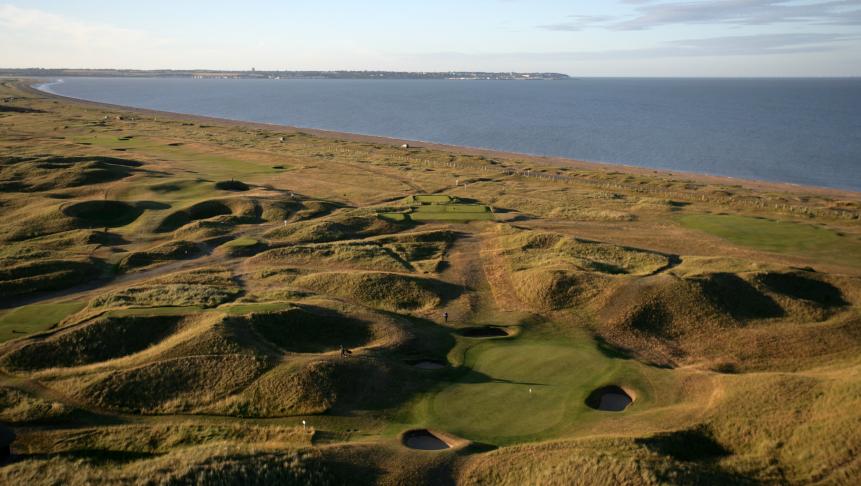 Photo by Stephen Szurlej Private 20. (30) Royal St. George’s Golf Club Sandwich, Kent, England
Photo by Stephen Szurlej Private 20. (30) Royal St. George’s Golf Club Sandwich, Kent, England
- World’s 100 Greatest
Royal St. George’s, in dunes along the English Channel, is what writer Adam Lawrence calls the ideal mix of championship golf and gentle quirks. Its quirks include a duo of massive bunkers that howl at tee shots on the par-5 fourth. Once as tall as a six-story building, they’ve eroded over the years, and have been stabilized the past 20 years by the addition of 93 railroad ties along their top edges. An Open Championship venue since 1894, Royal St. George’s is the most unpredictable in the rota, often kicking balls in mysterious directions and alternating between legendary champions like J.H. Taylor, Harry Vardon, Walter Hagen and Bobby Locke and surprise victors like Reg Whitcombe, Bill Rogers and Ben Curtis. Collin Morikawa won his second major championship here in 2021. View Course  Photo by Stephen Szurlej Private 19. (17) Royal Birkdale Golf Club Southport, Merseyside, England
Photo by Stephen Szurlej Private 19. (17) Royal Birkdale Golf Club Southport, Merseyside, England
- World’s 100 Greatest
Site of Jordan Spieth’s remarkable Open victory in 2017, Royal Birkdale has also been the venue for past Women’s British Opens, Ryder Cups, Walker and Curtis Cups. Three generations of the Hawtree design firm, oldest in the world, are responsible for Royal Birkdale. Patriarch Frederic G. did the present design, with its surprisingly flat fairways and docile greens between towering dunes, in 1931. Thirty years later, son Fred W. remodeled it, adding the now-classic par-3 12th. Forty years after that, grandson Martin revised the course for its ninth Open Championship, the one Spieth tried to throw away on the 13th before quickly rallying, going birdie-eagle on the next two holes to ultimately win by three. The Open will return to Birkdale in 2026. View Course  Gary Lisbon Private 18. (19) Royal Melbourne Golf Club (East) Black Rock, Victoria, Australia
Gary Lisbon Private 18. (19) Royal Melbourne Golf Club (East) Black Rock, Victoria, Australia
- World’s 100 Greatest
Former Australian Open champion Alex Russell and greenkeeper Mick Morcom built the West Course to plans of Alister MacKenzie, then added the East in 1931, on somewhat less inspiring land, flatter and more wooded. But the bunkering and green contours are very similar to the West. (Mackenzie had routed a nine-hole East Course that was never built. Russell incorporated a few of those holes.) A slight flaw may be that all four par 3s play in the same northerly direction. For composite tournament play, East’s holes 1-3 and 16-18 are used along with 12 of the West holes. View Course 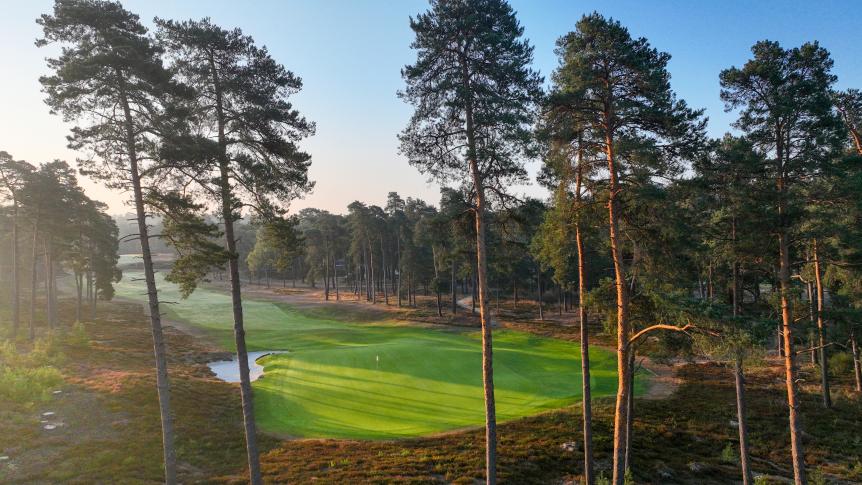 Gary Lisbon Private 17. (5) Morfontaine Golf Club Morfontaine, France
Gary Lisbon Private 17. (5) Morfontaine Golf Club Morfontaine, France
- World’s 100 Greatest
A timeless 1927 design north of Paris by British architect Tom Simpson, perhaps the greatest bunker artist of his generation, Morfontaine looks suspiciously like a heathland course around London with windswept Scotch pines and clumps of heather atop a base of sand. But it’s tighter than Sunningdale or St. George’s Hill, and the forest surrounding holes is far denser. American architect Kyle Phillips updated the layout in 2004, adding a new 12th green to extend the par 5 by 60 yards. It fits in perfectly. View Course 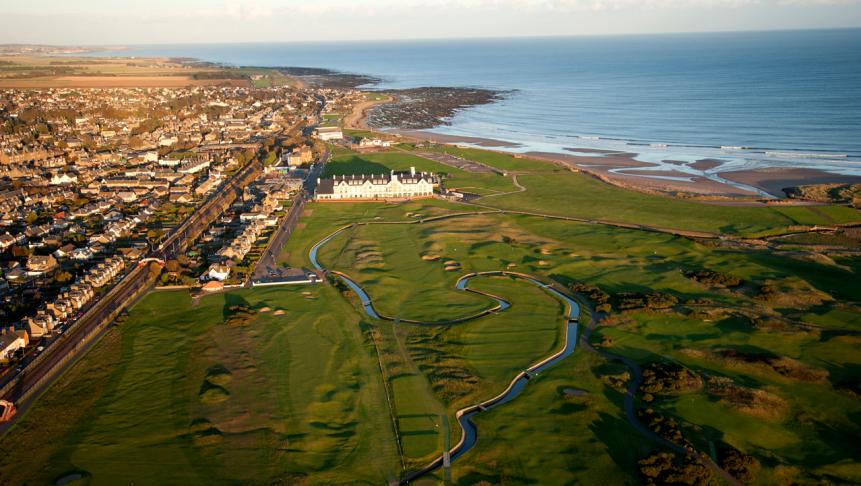 Stephen Szurlej Private 16. (24) Carnoustie Golf Links (Championship) Carnoustie, Scotland
Stephen Szurlej Private 16. (24) Carnoustie Golf Links (Championship) Carnoustie, Scotland
- World’s 100 Greatest
Perhaps the homeliest, certainly the longest and toughest of Open venues, Carnoustie is a no-holds-barred layout intended to test the best. James Braid is usually credited with the present design, but it was green chairman James Wright who in 1931 created the stirring last three holes, with 17 and 18 harassed by twisting, turning Barry Burn. In the 1968 Open, Jack Nicklaus complained that a knob in the middle of the ninth fairway kicked his drives into the rough. When he returned for the 1975 Open, he found it had been converted to a pot bunker. View Course 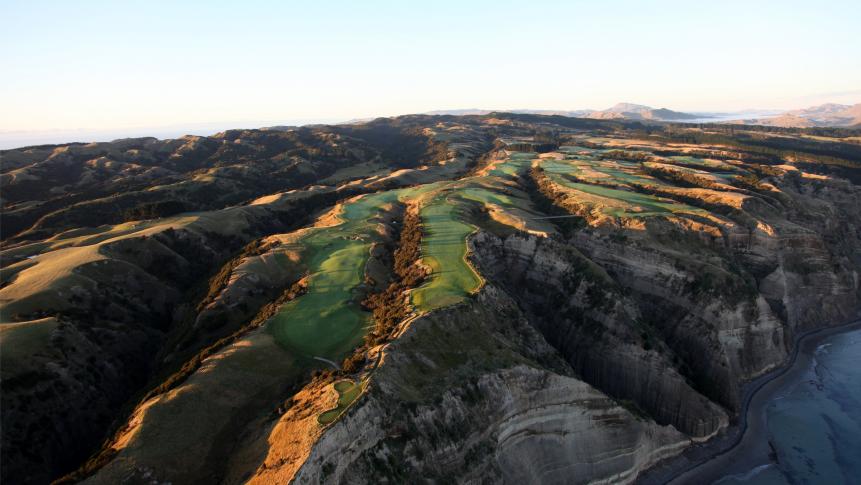 Stephen Szurlej 15. (21) Cape Kidnapper’s Golf Course Te Awanga, Hawke’s Bay, New Zealand
Stephen Szurlej 15. (21) Cape Kidnapper’s Golf Course Te Awanga, Hawke’s Bay, New Zealand
- World’s 100 Greatest
Not a links, more like a stratospheric Pebble Beach, high atop a windswept plateau some 500 feet above the sea. The 2004 design truly demonstrates the lay-of-the-land philosophy of American architect Tom Doak, who ran holes out and back along a series of ridges perpendicular with the coastline, most framed by deep canyons. The fairways are wide, but Doak rewards bold tee shots that flirt with ravines and sets strategies using some of the deepest bunkers he has ever built. Cape Kidnappers was also the International winner of a 2012 Environmental Leaders in Golf Award, co-sponsored by Golf Digest. View Course 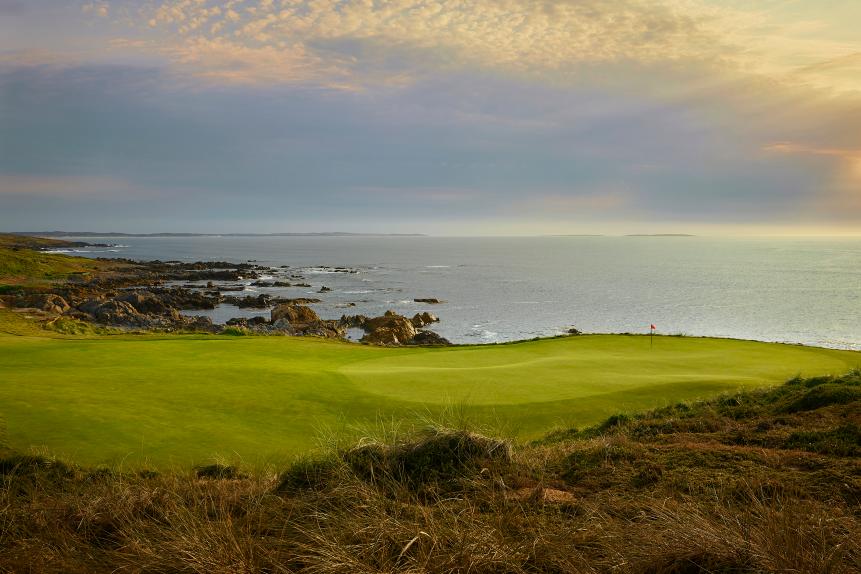 Stephen Denton 14. (12) Cape Wickham Golf Links Wickham, Tasmania, Australia
Stephen Denton 14. (12) Cape Wickham Golf Links Wickham, Tasmania, Australia
- World’s 100 Greatest
American Mike DeVries and Australian golf writer Darius Oliver collaborated on a breathtaking site along Bass Strait, a notorious stretch of Australian seacoast that once shipwrecked voyages of old. The routing on this glorious collection of holes is heart-pounding, starting along rocks and crashing surf, moving inland but not out of the wind, returning to ocean edge at the downhill 10th, pitch-shot 11th and drivable par-4 12th. It then wanders into dunes before a crescendo closing hole curving along Victoria Cove beach, which is in play at low tides. View Course 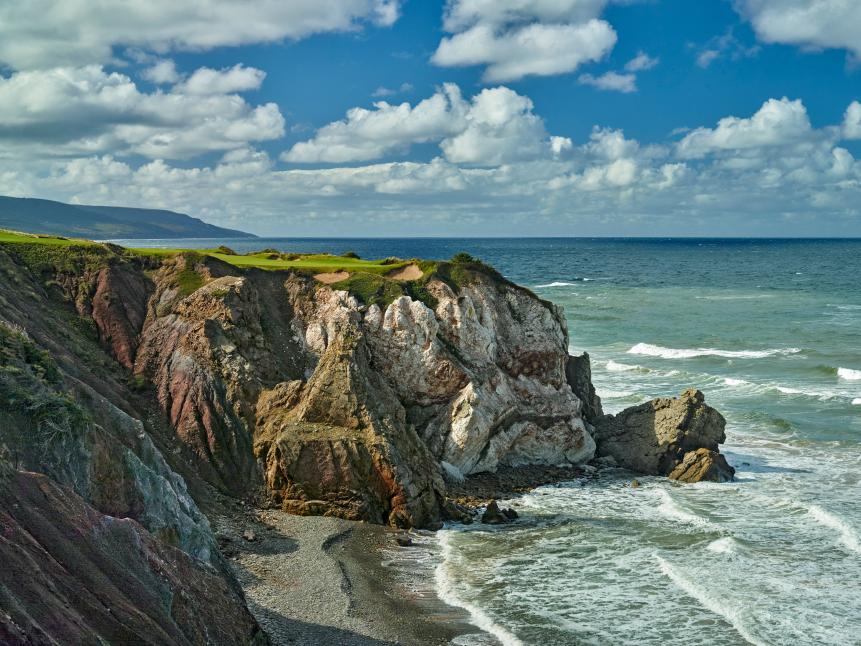 John and Jeannine Henebry 13. (10) Cabot Cliffs Inverness, Nova Scotia, Canada
John and Jeannine Henebry 13. (10) Cabot Cliffs Inverness, Nova Scotia, Canada
- World’s 100 Greatest
Another sensational Bill Coore and Ben Crenshaw design, Cabot Cliffs overflows with variety with its southernmost holes in Lahinch-like sand dunes, its northernmost atop Pebble Beach-type ocean cliffs and bits of pine-lined Scottish Highlands in between. The course has six par 5s, including three in the space of four holes, and six par 3s, plus an additional one-shot bye-hole aside the fourth. Sporting the same fescue turf mix as nearby sister course Cabot Links (ranked 25th), some tee shots seem to roll forever, but so do errant shots that miss greens. The cliff-edged par-3 16th has become one of the game’s most photographed holes. View Course 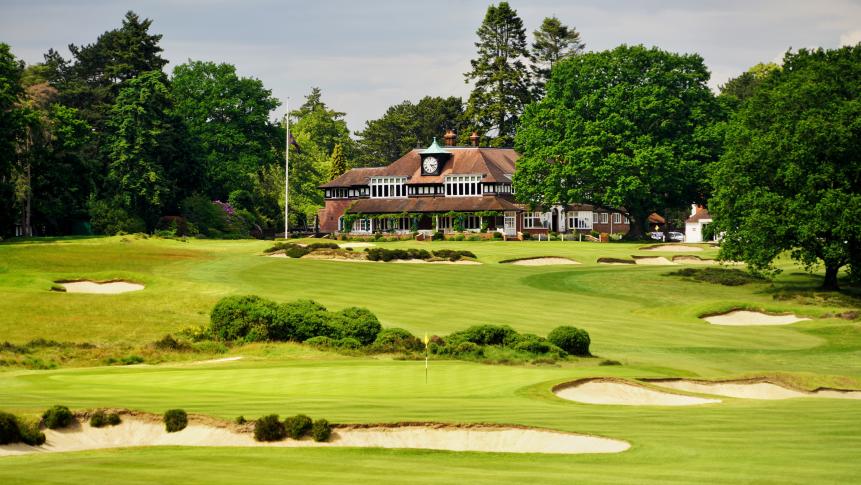 Jon Cavalier Private 12. (15) Sunningdale Golf Club (Old) Sunningdale, Berkshire, England
Jon Cavalier Private 12. (15) Sunningdale Golf Club (Old) Sunningdale, Berkshire, England
- World’s 100 Greatest
A strong case can be made that Sunningdale’s Old Course was the first great inland design, and the course that was most successful in emulating the naturalness and strategies inherent in links courses when Willie Park Jr. built it in 1901. Chopped from a pine forest but routed like a links, with the ninth at the far end of the property, it plays like a links, too, for there’s a sand base beneath the turf. The Old has big greens, as Park put a premium on approach putting, and artful bunkers, with both angled cross-bunkers and necklaces of sand hampering direct routes to some greens. Harry Colt’s remodel two decades later (he was Sunningdale’s first club secretary) brought the Old into the new modern era and is responsible for the playability and ranking the course deserves today. To American visitors, the look of Sunningdale brings to mind Pine Valley or Pinehurst. View Course 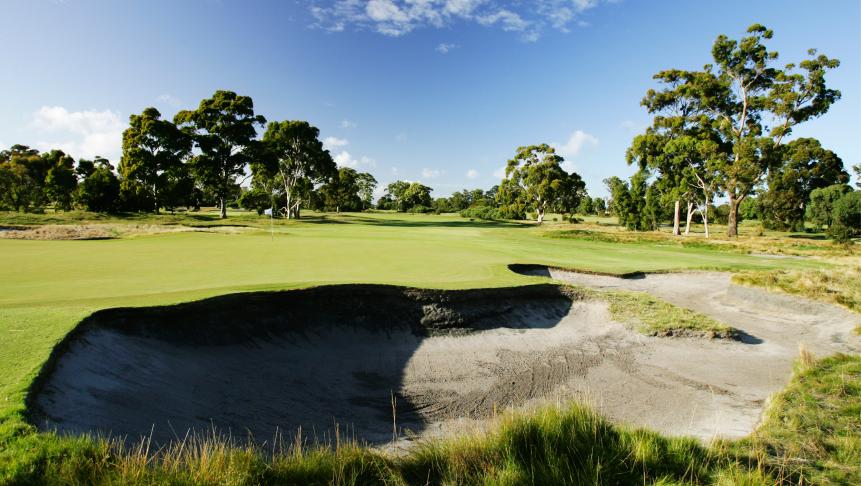 David Cannon/Getty Images 11. (11) Kingston Heath Golf Club Cheltenham, Victoria, Australia
David Cannon/Getty Images 11. (11) Kingston Heath Golf Club Cheltenham, Victoria, Australia
- World’s 100 Greatest
Kingston Heath is often considered an Alister MacKenzie design, but in fact Australian golf professional Des Soutar designed the course in 1925. MacKenzie made a brief visit the following year and suggested the bunkering, which was constructed by greenkeeper Mick Morcom before he built Royal Melbourne’s two courses. The bunkers are long, sinewy, shaggy, gnarly, windswept, and of course, strategically placed. Some say MacKenzie’s tee-to-green stretch of bunkers on the par-3 15th set the standard for all Sandbelt layouts. View Course  Photo by David Cannon/Getty Images Private 10. (18) Ballybunion Golf Club (Old) Ballybunion, Kerry, Ireland
Photo by David Cannon/Getty Images Private 10. (18) Ballybunion Golf Club (Old) Ballybunion, Kerry, Ireland
- World’s 100 Greatest
Ballybunion has always been great, but it wasn’t until they relocated the clubhouse in 1971 to the southern end that it became thrilling. Tom Watson’s effusive praise for the course after his first visit in 1981 also helped put the relatively unknown Ballybunion on everyone’s mind. The clubhouse move turned the old finish of anticlimactic back-to-back par 5s into the fourth and fifth holes and shifted the new closing holes to ones in spectacular dunes just north of the intersection of the Shannon River and the Atlantic Ocean. By then an honorary member, Watson suggested modest design changes in the 1990s, and later Martin Hawtree added new tees atop dunes on several holes. View Course  David Cannon/Getty Images Private 9. (23) North Berwick Golf Club North Berwick, Scotland
David Cannon/Getty Images Private 9. (23) North Berwick Golf Club North Berwick, Scotland
- World’s 100 Greatest
North Berwick must be played with good humor. To do otherwise is to not properly appreciate its outrageous topography (some terrain is like an elephant cemetery) and outlandish holes, like the sunken 13th green beyond a stone wall, the renowned Redan par-3 15th, blind from the tee, and the long, narrow 16th green with a gulch separating front and back plateaus, surely the model for the infamous Biarritz green, although purists say otherwise. The out-and-back routing that begins and ends in town is reminiscent of St. Andrews, and the four par 3s, all vastly different, comprise one of the best sets in the game of golf. View Course 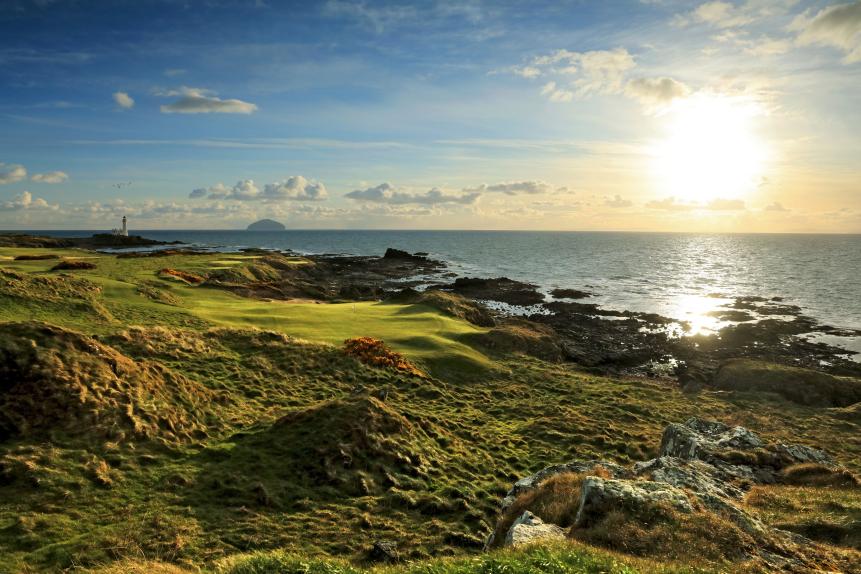 Courtesy of Trump Turnberry Public 8. (13) Trump Turnberry (Ailsa) Turnberry, Scotland, United Kingdom
Courtesy of Trump Turnberry Public 8. (13) Trump Turnberry (Ailsa) Turnberry, Scotland, United Kingdom
- World’s 100 Greatest
A legendary links ravaged by World War II, architect Philip Mackenzie Ross re-established it to its present quality, tearing away the wartime concrete landing strips to create a dramatic back nine and building a set of varied greens, some receptive, other not so much. After Donald Trump purchased the course, Martin Ebert of the firm of Mackenzie & Ebert made notable changes, creating new par 3s at Nos. 6 and 11, converting the old par-4 ninth into an ocean-edge par 3, and turning the fifth, 10th and 14th into par 5s and the 17th into a long par 4. New tees on 18 eliminate its old dogleg tee shot. To complete the new look, Ebert replaced revetted bunkers with ragged-edged ones. View Course 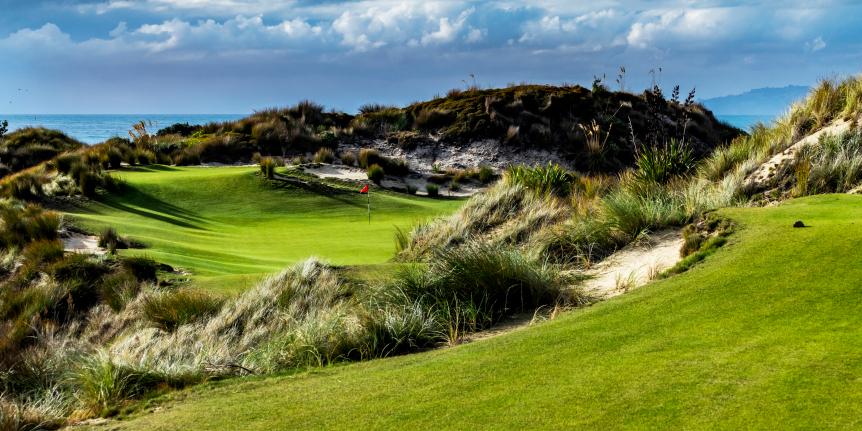 Private 7. (2) Tara Iti Golf Club Manghawai, Northland, New Zealand
Private 7. (2) Tara Iti Golf Club Manghawai, Northland, New Zealand
- World’s 100 Greatest
Built by American designer Tom Doak from what had been a pine-covered Sahara along the northeastern coast of New Zealand’s North Island, Tara Iti iis far more links-like than the country’s other coastal courses, most of which are on rock. Doak and design associate Brian Slawnik spent more than two years gently resculpting the sandy soil into hummocks, punchbowls and sand dunes that look like they were formed by wind and vegetated by nature. There’s lots of sand but no bunkers. Golfers may ground the club anywhere. With holes inspired by Cypress Point, Royal Dornoch and Royal St. George’s, and views everywhere of the Hauraki Gulf, this might be New Zealand’s answer to Pebble Beach’s Carmel Bay. The greatest meeting of land and sea is clearly up for debate. View Course 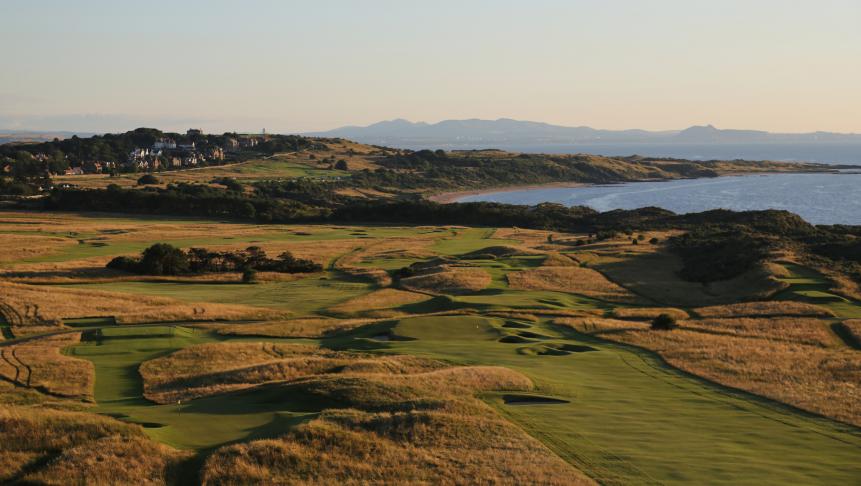 Photo by Stephen Szurlej 6. (7) Muirfield Muirfield, Scotland
Photo by Stephen Szurlej 6. (7) Muirfield Muirfield, Scotland
- World’s 100 Greatest
Muirfield is universally admired as a low-key, straightforward links with fairways seemingly containing a million traffic bumps. Except for a blind tee shot on the 11th, every shot is visible and well-defined. Greens are the correct size to fit the expected iron of approach. The routing changes direction on every hole to pose different wind conditions. The front runs clockwise, the back counterclockwise, but history mistakenly credits Old Tom Morris with Muirfield’s returning nines. That was the result of H.S. Colt’s 1925 redesign. View Course  Gary Lisbon Private 5. (4) Royal Melbourne Golf Club (West) Black Rock, Victoria, Australia
Gary Lisbon Private 5. (4) Royal Melbourne Golf Club (West) Black Rock, Victoria, Australia
- World’s 100 Greatest
Alister MacKenzie’s 1926 routing fits snuggly into the contours of the rolling sandbelt land. His greens are miniature versions of the surrounding topography. His crisp bunkering, with vertical edges possible due to the unique compaction qualities of the Sandbelt soils, stand a foot high—or sometimes taller—and chew into fairways and putting surfaces. Most holes are doglegs, so distance means nothing and angle into the pin is everything. For championships, holes 8 and 9 and 13 through 16 are skipped in favor of six from the East Course, which is ranked 18th. That “composite course” was once ranked among the best in the world by several publications. View Course 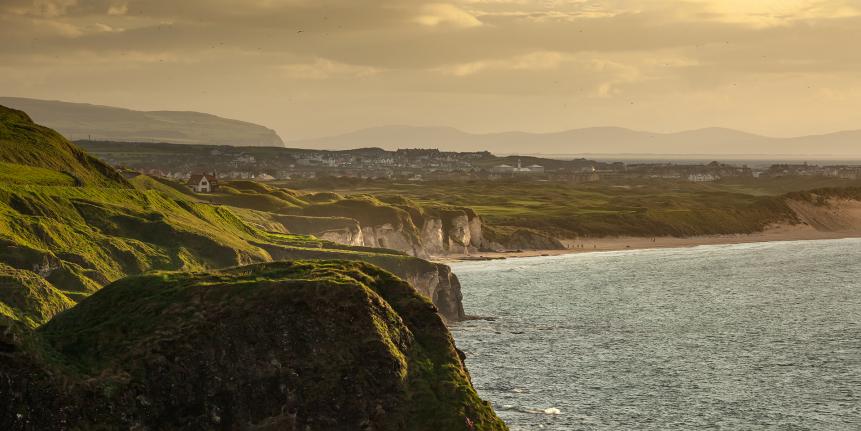 Mark Alexander Private 4. (8) Royal Portrush Golf Club (Dunluce) Portrush, Northern Ireland
Mark Alexander Private 4. (8) Royal Portrush Golf Club (Dunluce) Portrush, Northern Ireland
- World’s 100 Greatest
Portrush is still the only Irish course to host The Open. The Old Tom Morris design, reworked by H.S. Colt in the 1930s, was the Open site back in 1951, and was again in 2019, won by Irishman Shane Lowry. In preparation for that event, architect Martin Ebert added new seventh and eighth holes, fashioned from land on the club’s Valley Course (ranked 82nd), to replace its weak 17th and 18th holes. That means the notorious Calamity Hole, an uphill 210-yard par 3, will now be the 16th instead of the 14th, and the old dogleg-right par-4 16th will now be the closing hole, with a new back tee. Ebert retained Colt’s greens, considered one of the best set of putting surfaces in the world. View Course  (Photo by David Cannon/Getty Images) 3. (9) The Old Course at St Andrews St Andrews, Scotland
(Photo by David Cannon/Getty Images) 3. (9) The Old Course at St Andrews St Andrews, Scotland
- World’s 100 Greatest
The Old Course at St. Andrews is ground zero for all golf architecture. Every course designed since has either been in response to one or more of its features, or in reaction against it. Architects either favor the Old Course’s blind shots or detest them, either embrace St. Andrews’ enormous greens or consider them a waste of turf. Latest polarizing topic: Martin Hawtree’s design changes in advance of the 2015 and 2022 Open Championships, which many considered blasphemy beforehand. After Zach Johnson’s dramatic overtime victory in the former, few mentioned the alterations, and the duel of the Cam’s in 2022, with Smith’s Sunday 64 nosing out Young’s 65, both surging ahead of overnight leader Rory McIlroy, put the focus on the race and not the architecture. Actually, the topic du jour is no longer pre-championship modifications but technological supremacy as the tees have had to be stretched and extended to parts well beyond the course’s traditional boundaries due to the runaway distances top players hit the ball. It remains to be seen how much of a fight the Old Course can put up in the absence of a stern 20 mph wind, but notwithstanding the games of a few thousand global players it remains the world’s most influential and fascinating merger of nature and architecture. View Course 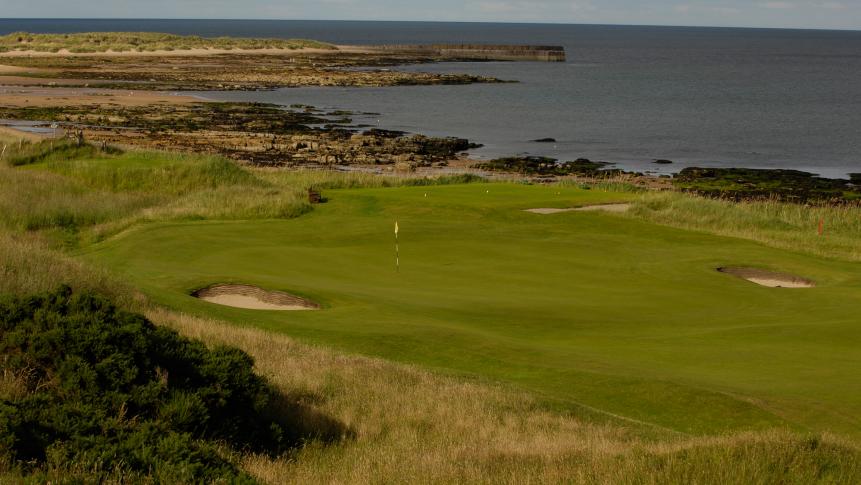 J.D. Cuban 2. (3) Royal Dornoch Golf Club (Championship) Dornoch, Scotland
J.D. Cuban 2. (3) Royal Dornoch Golf Club (Championship) Dornoch, Scotland
- World’s 100 Greatest
Herbert Warren Wind called it the most natural course in the world. Tom Watson called it the most fun he’d had playing golf. Donald Ross called it his home, having been born in the village and taught the game on the links. Tucked in an arc of dunes along the North Sea shoreline, Dornoch’s greens, some by Old Tom Morris, others by John Sutherland or 1920 Open champion George Duncan, sit mostly on plateaus and don’t really favor bounce-and-run golf. That’s the challenge: hitting those greens in a Dornoch wind. View Course  Nick Wall Private 1. (1) Royal County Down Golf Club (Championship) Newcastle, Northern Ireland
Nick Wall Private 1. (1) Royal County Down Golf Club (Championship) Newcastle, Northern Ireland
- World’s 100 Greatest
- Best in Every Country
On a clear spring day, with Dundrum Bay to the east, the Mountains of Mourne to the south and gorse-covered dunes in golden bloom, there is no lovelier place in golf. The design is attributed to Old Tom Morris but was refined by half a dozen architects in the past 120 years, most recently by Donald Steel. Though the greens are surprisingly flat, as if to compensate for the rugged terrain and numerous blind shots, bunkers are a definite highlight, most with arched eyebrows of dense marram grasses and impenetrable clumps of heather. View Course More from Golf Digest 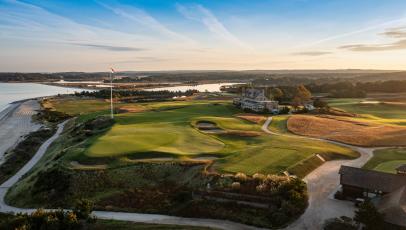 2023-2024 ranking America’s 100 Greatest Golf Courses
2023-2024 ranking America’s 100 Greatest Golf Courses
Explore our brand-new course reviews experience with individual course pages for bonus photography, drone footage and expanded reviews of top international courses and all 17,000-plus courses in the United States. Post your own ratings for courses you’ve played … and tell us where it should be ranked.
This article was originally published on golfdigest.com

